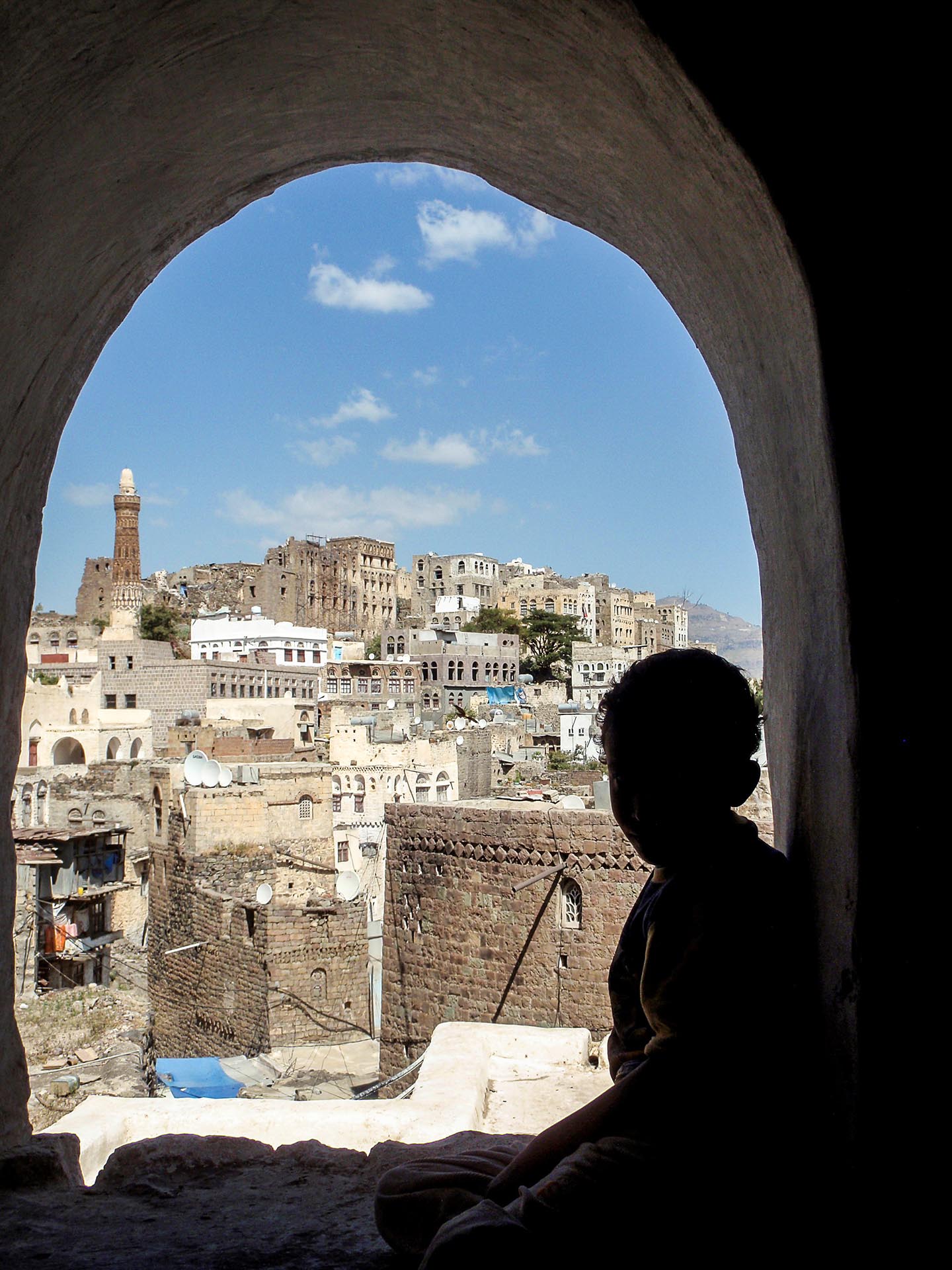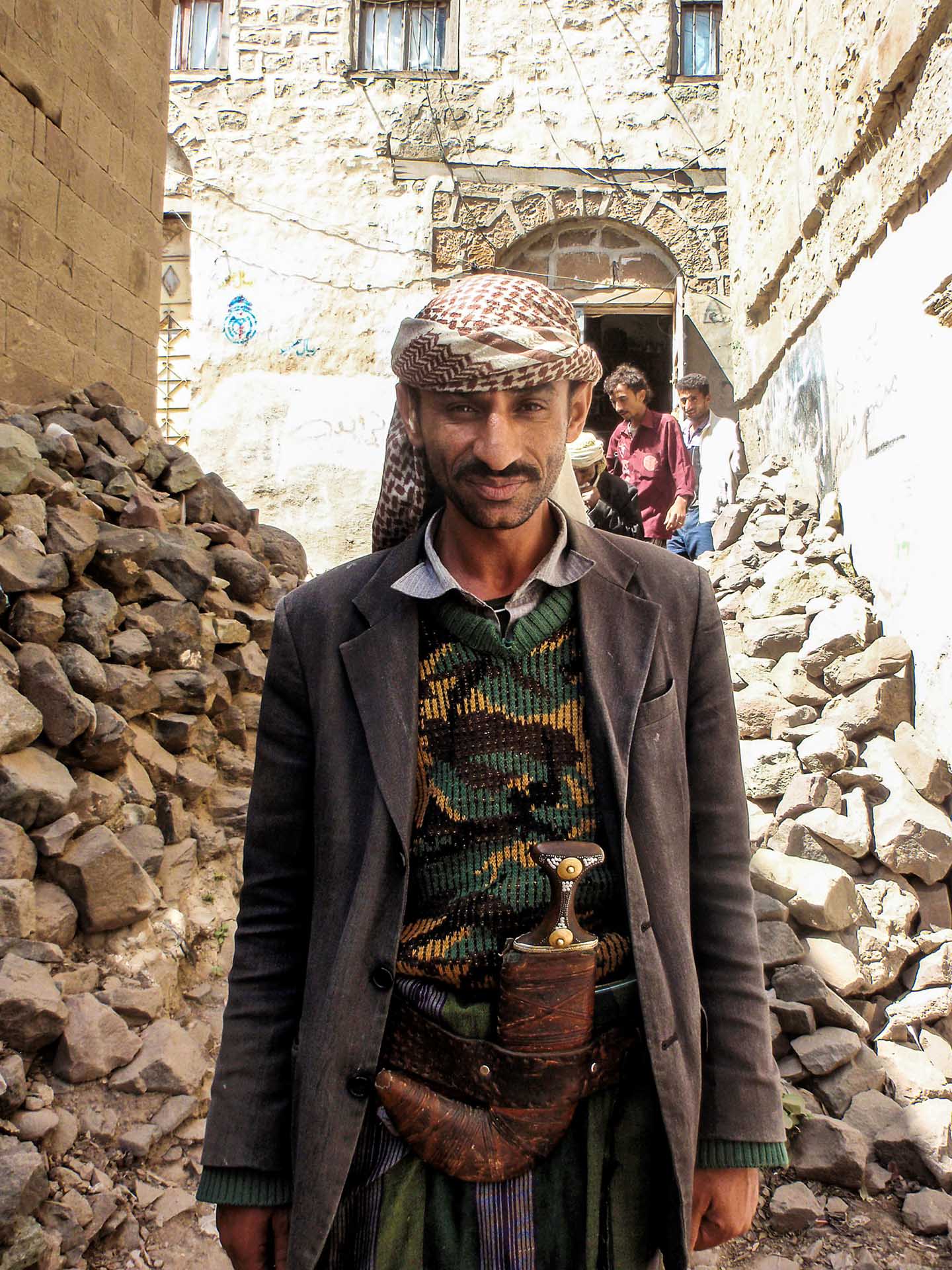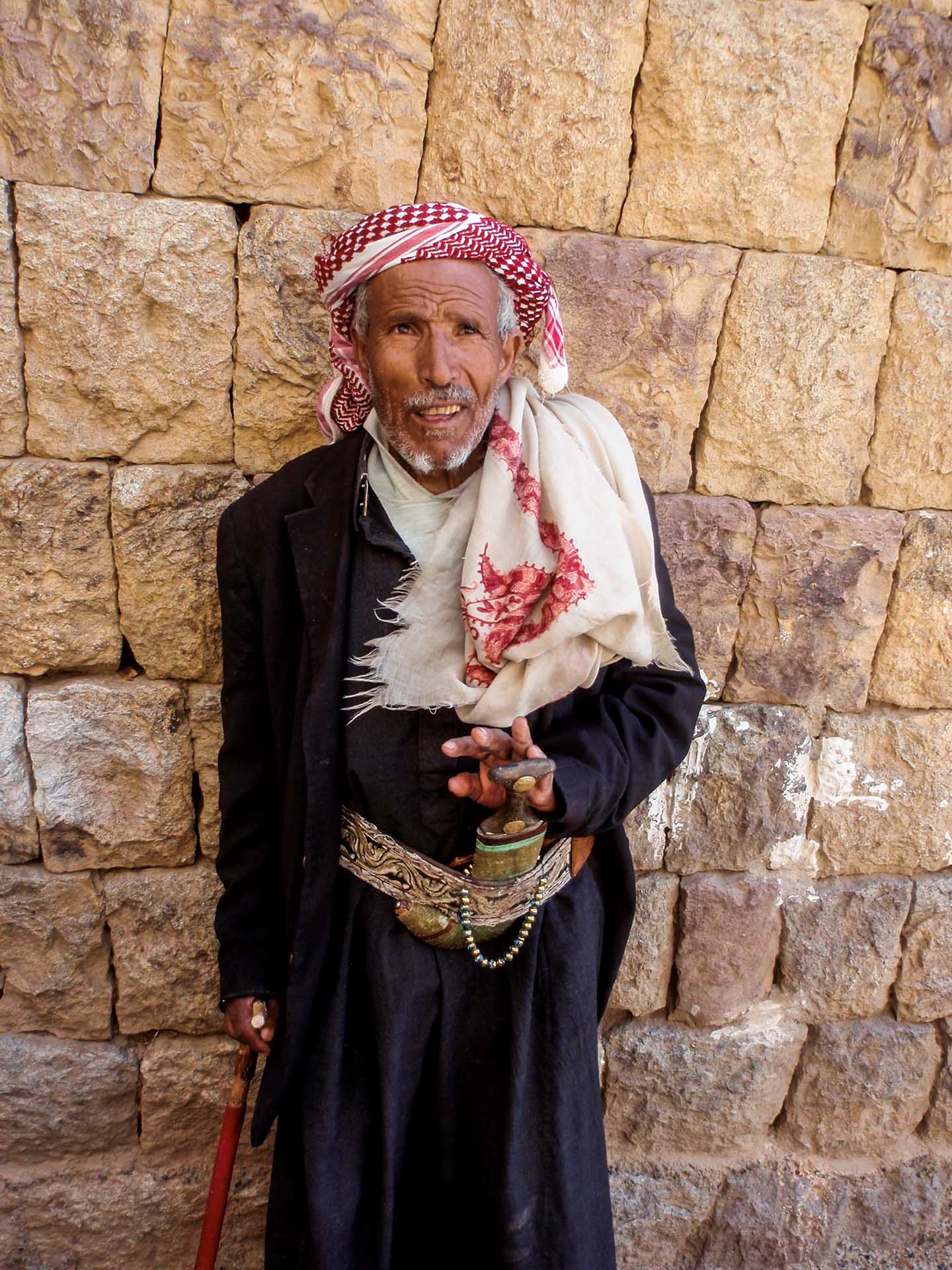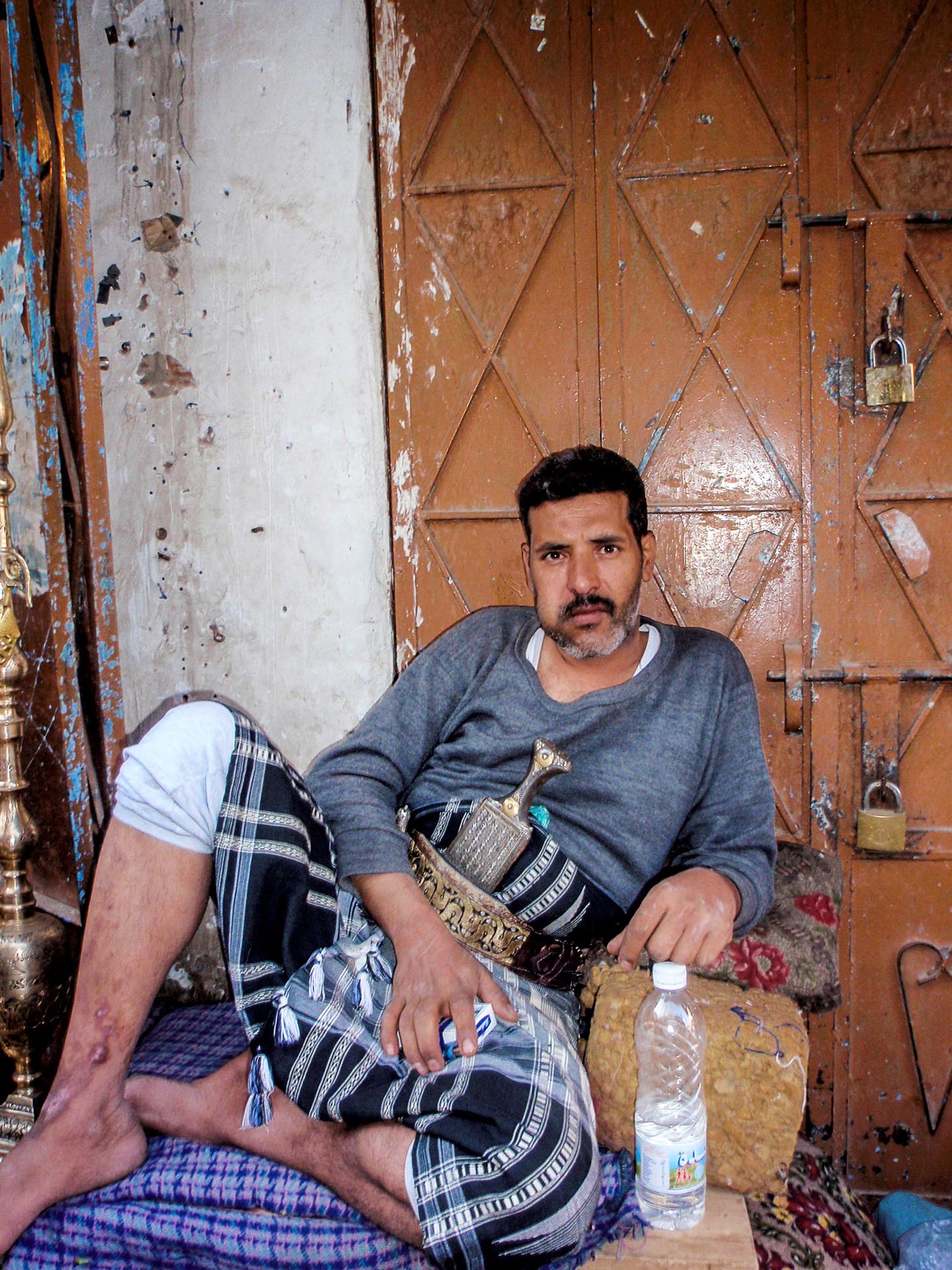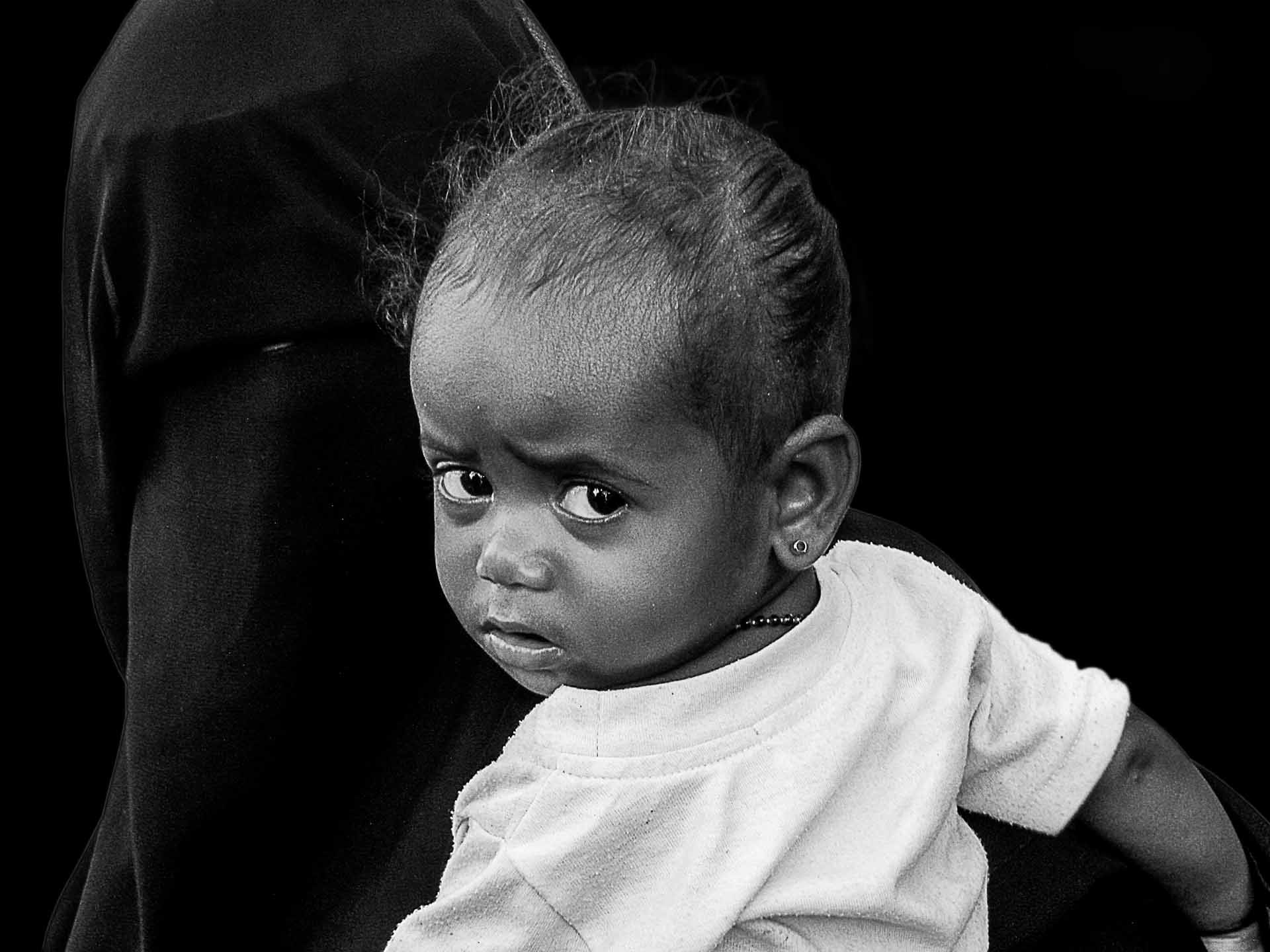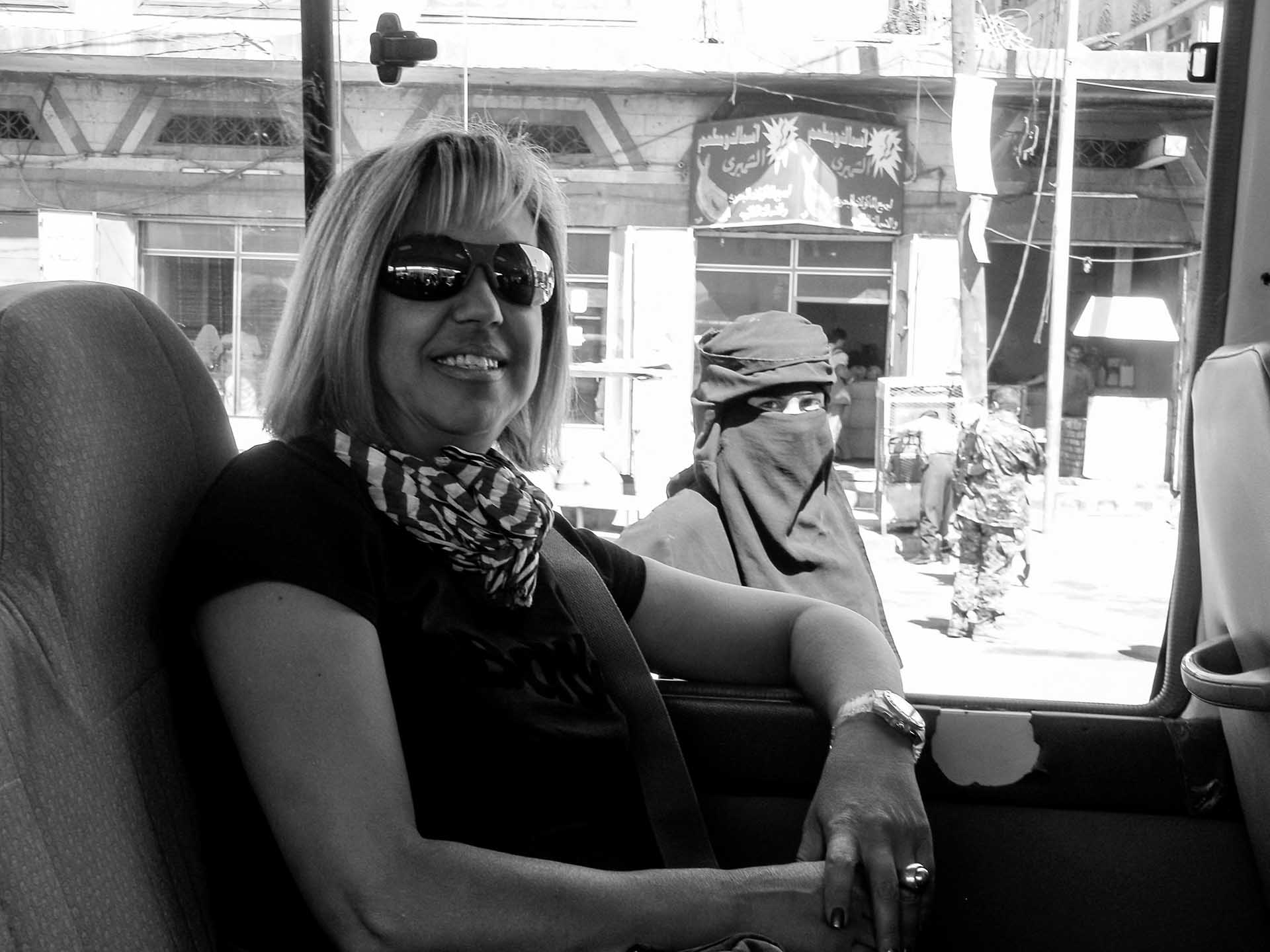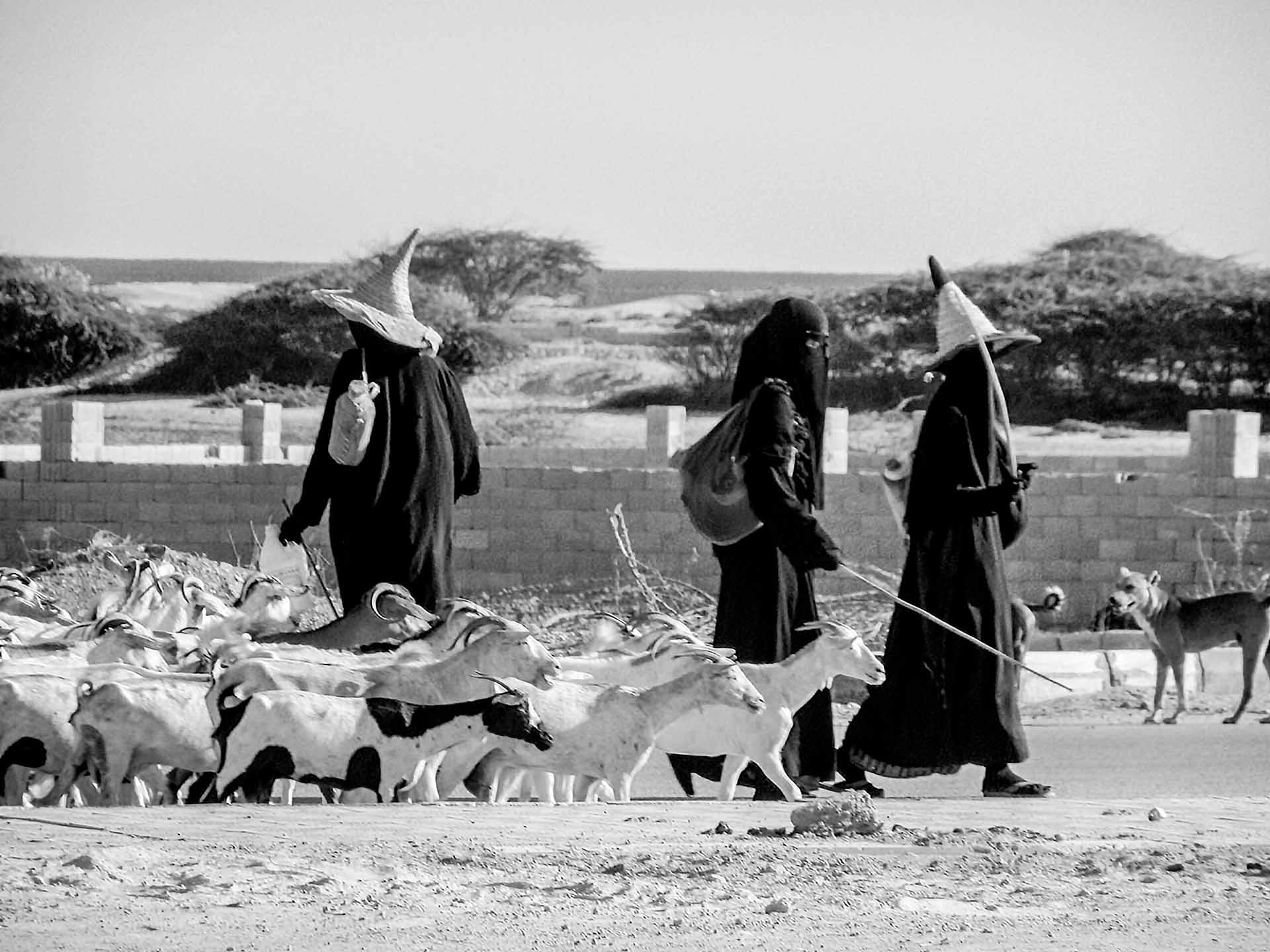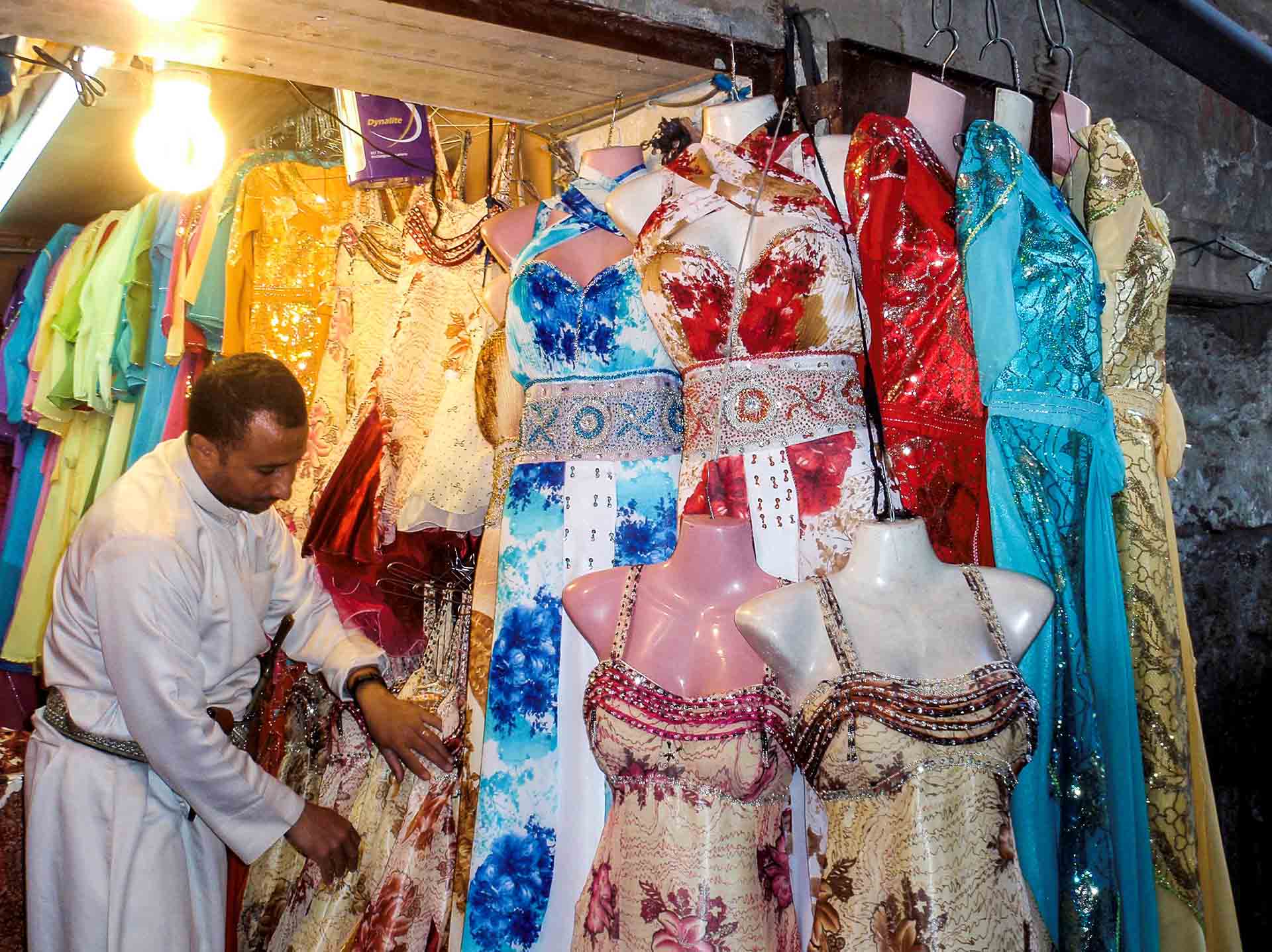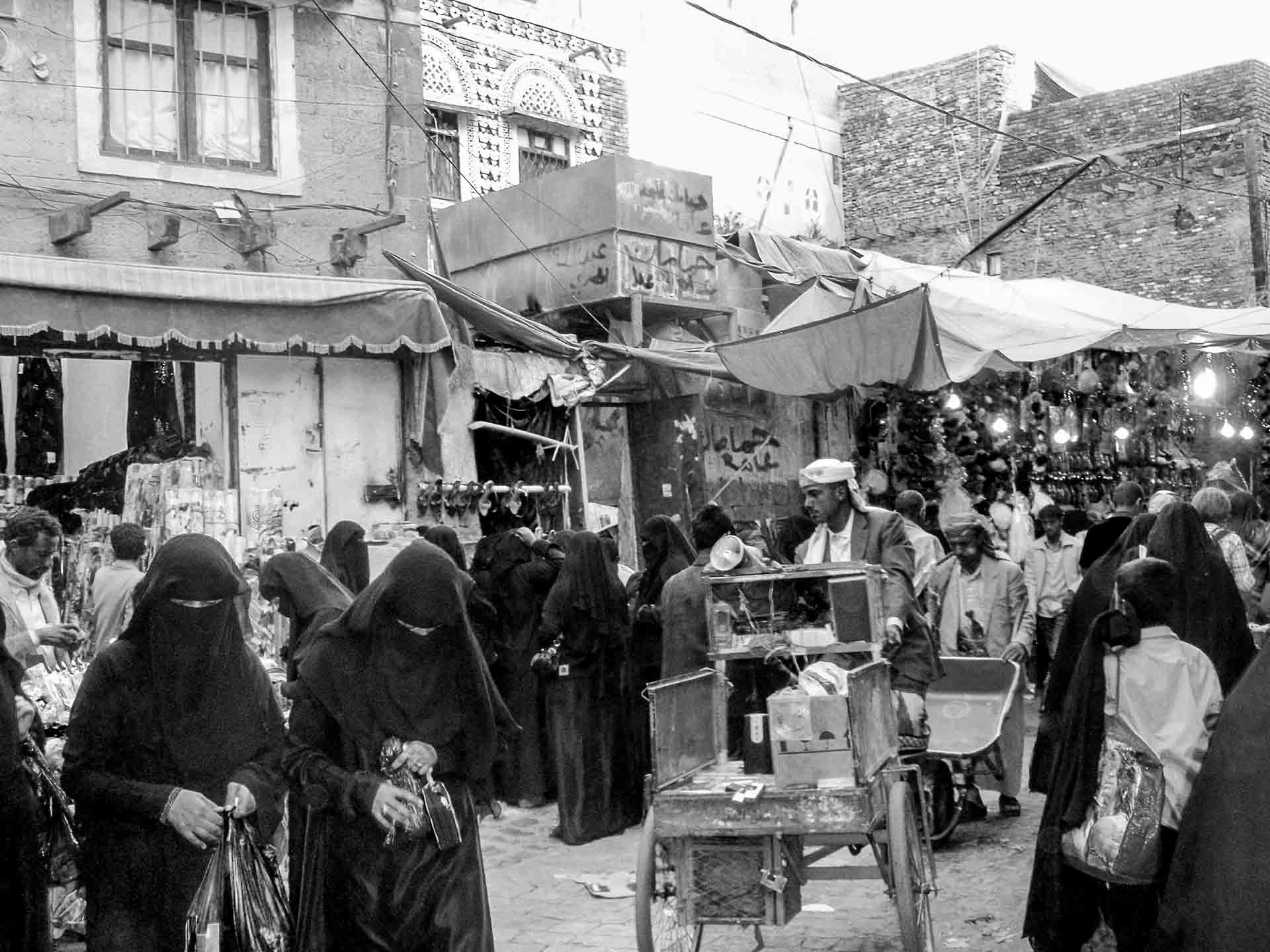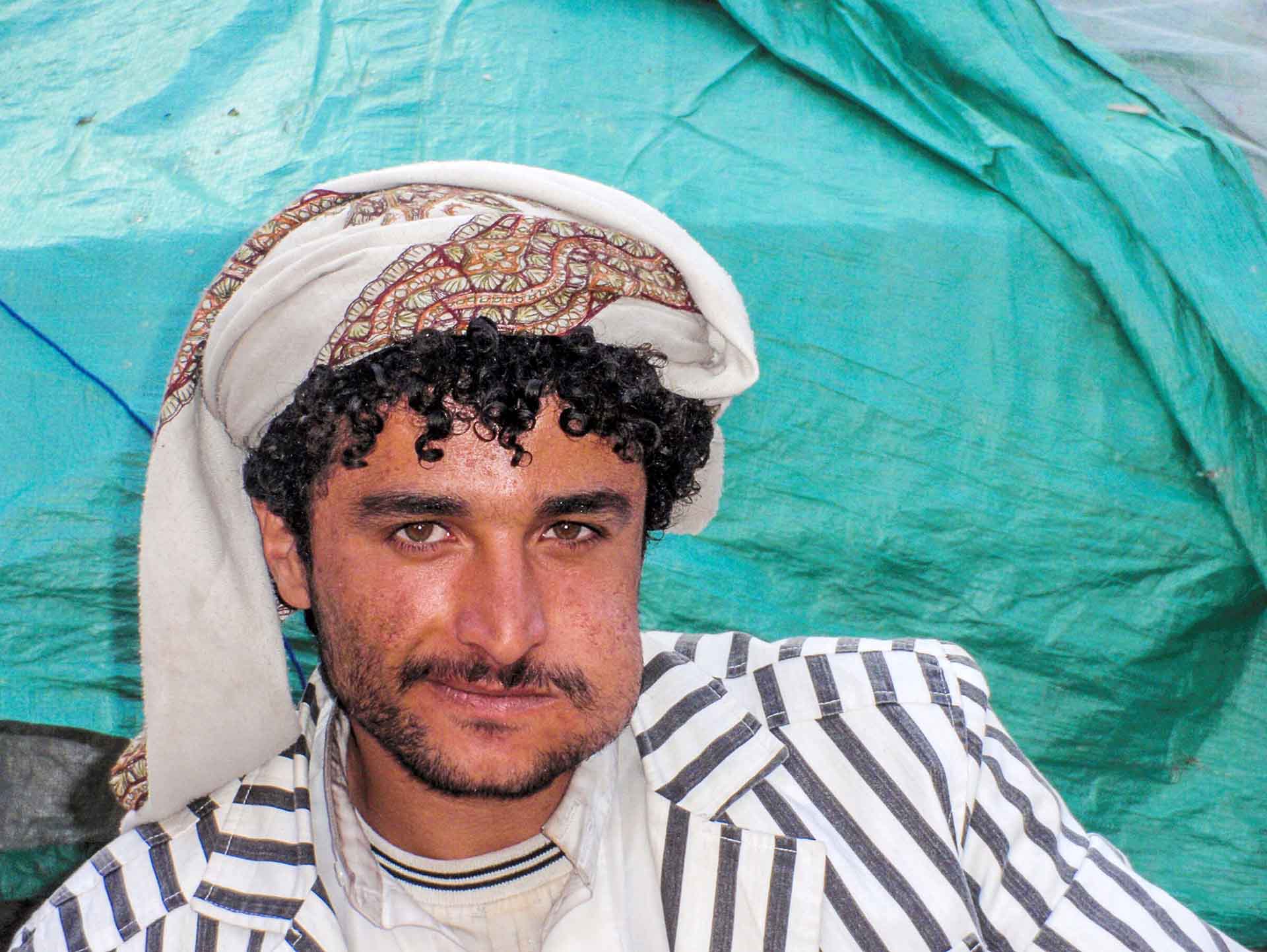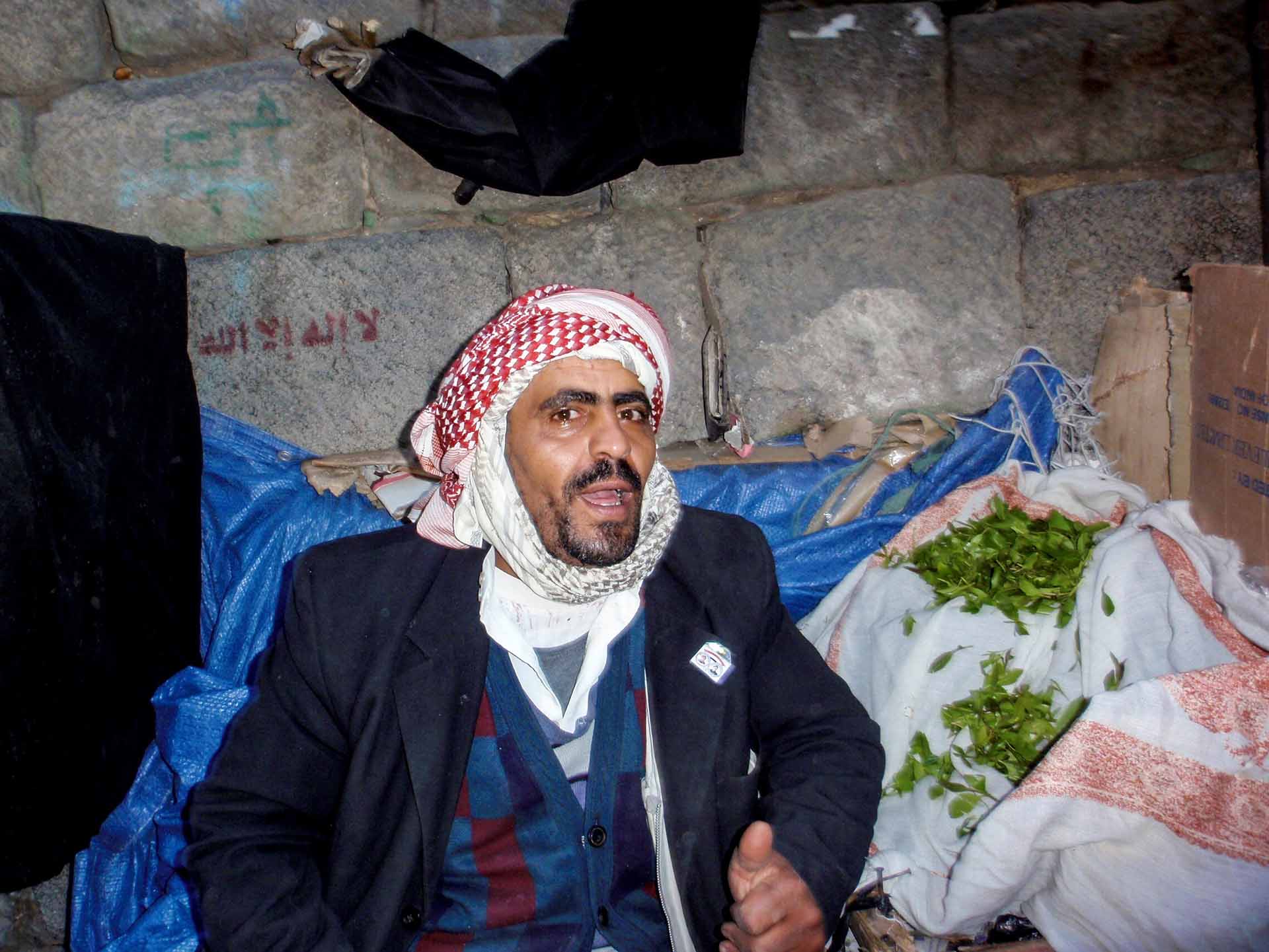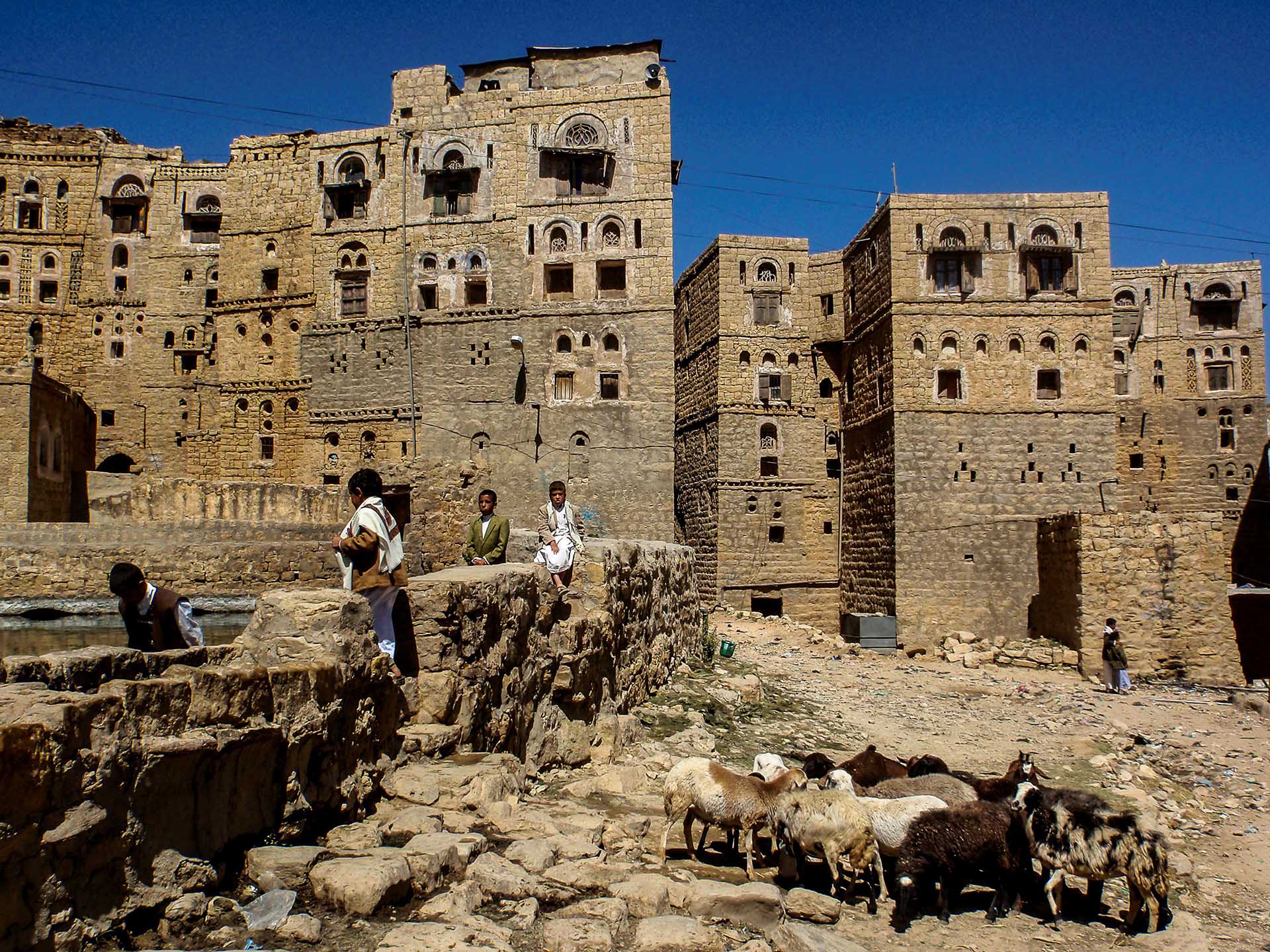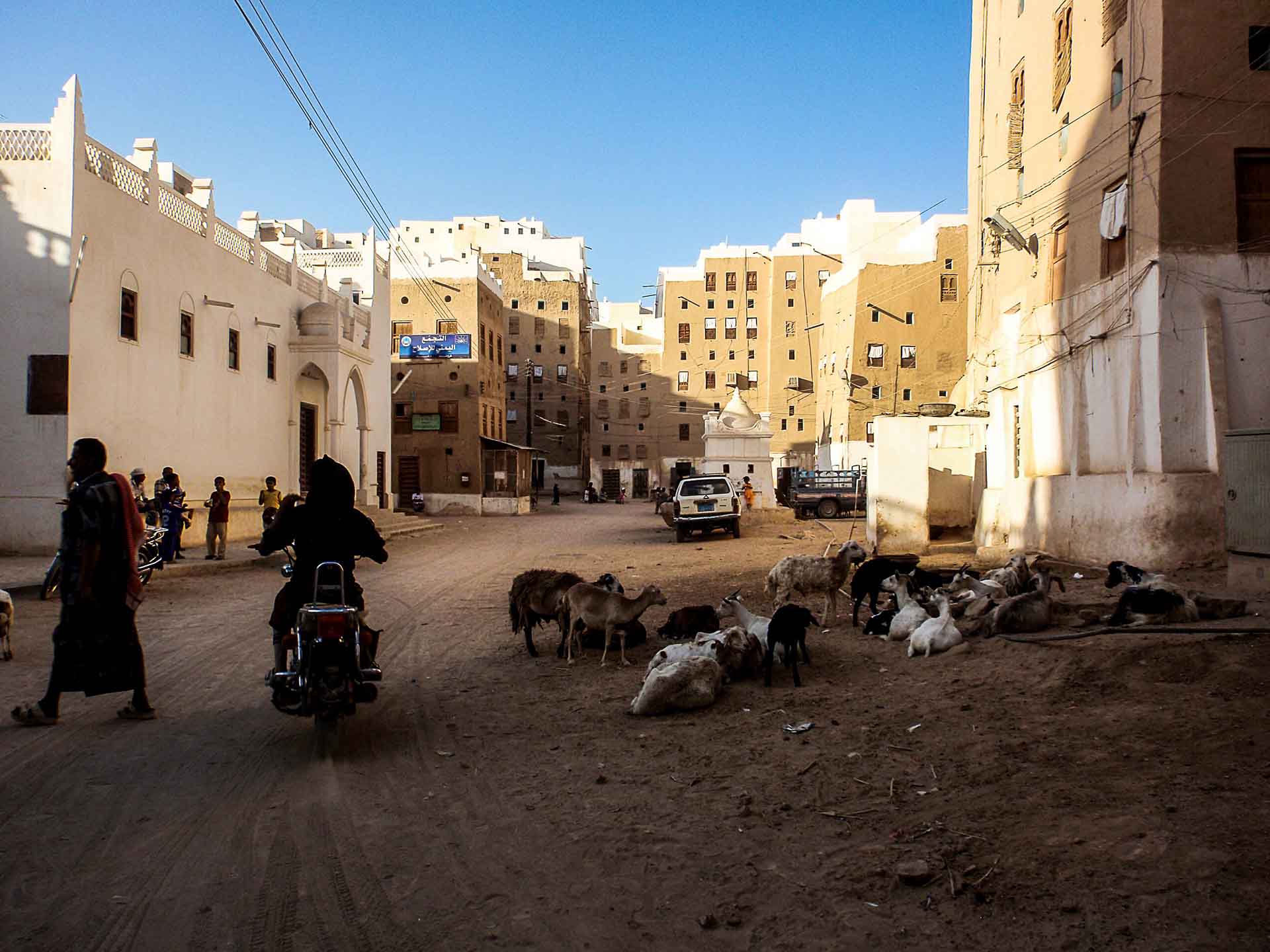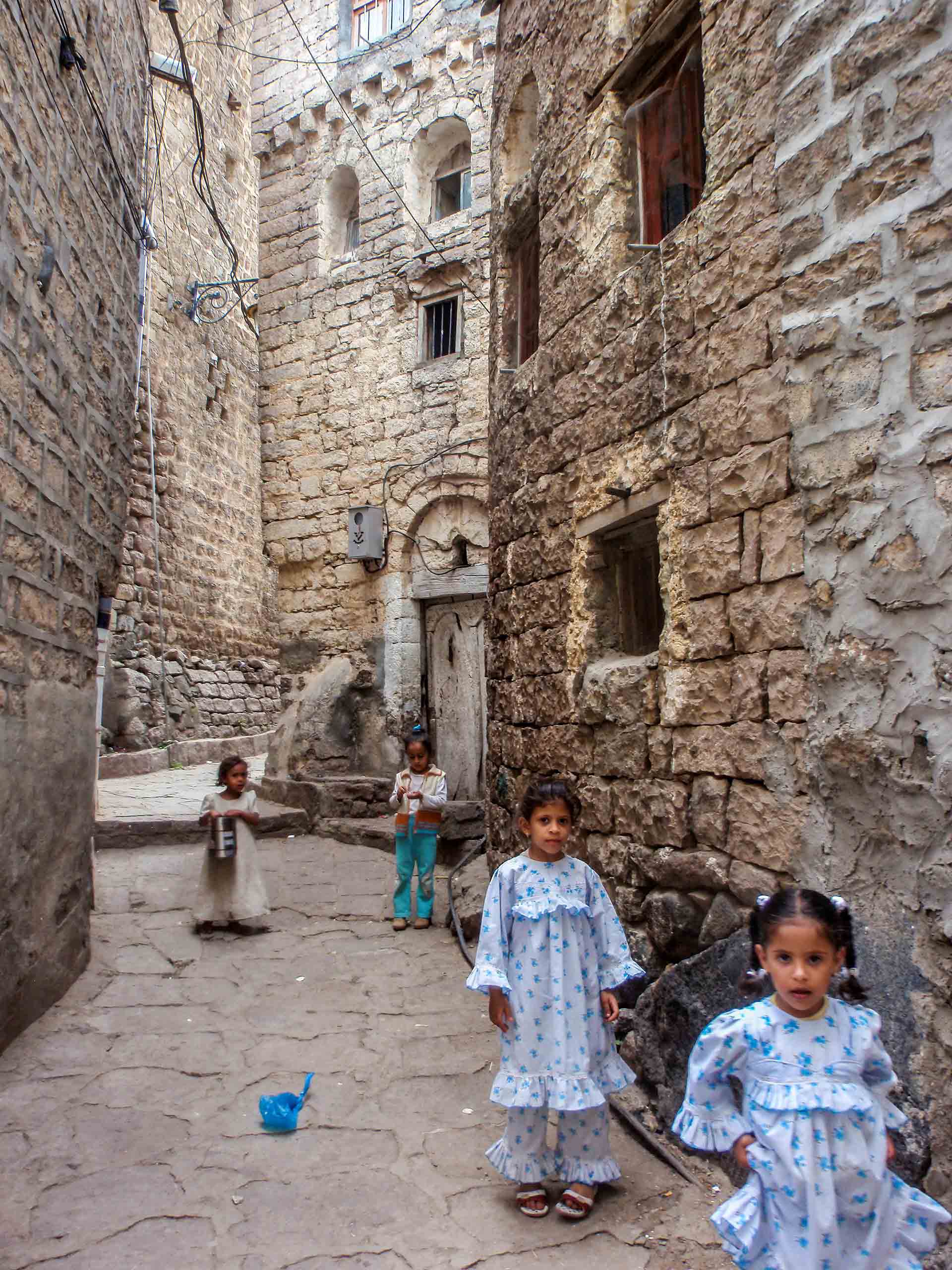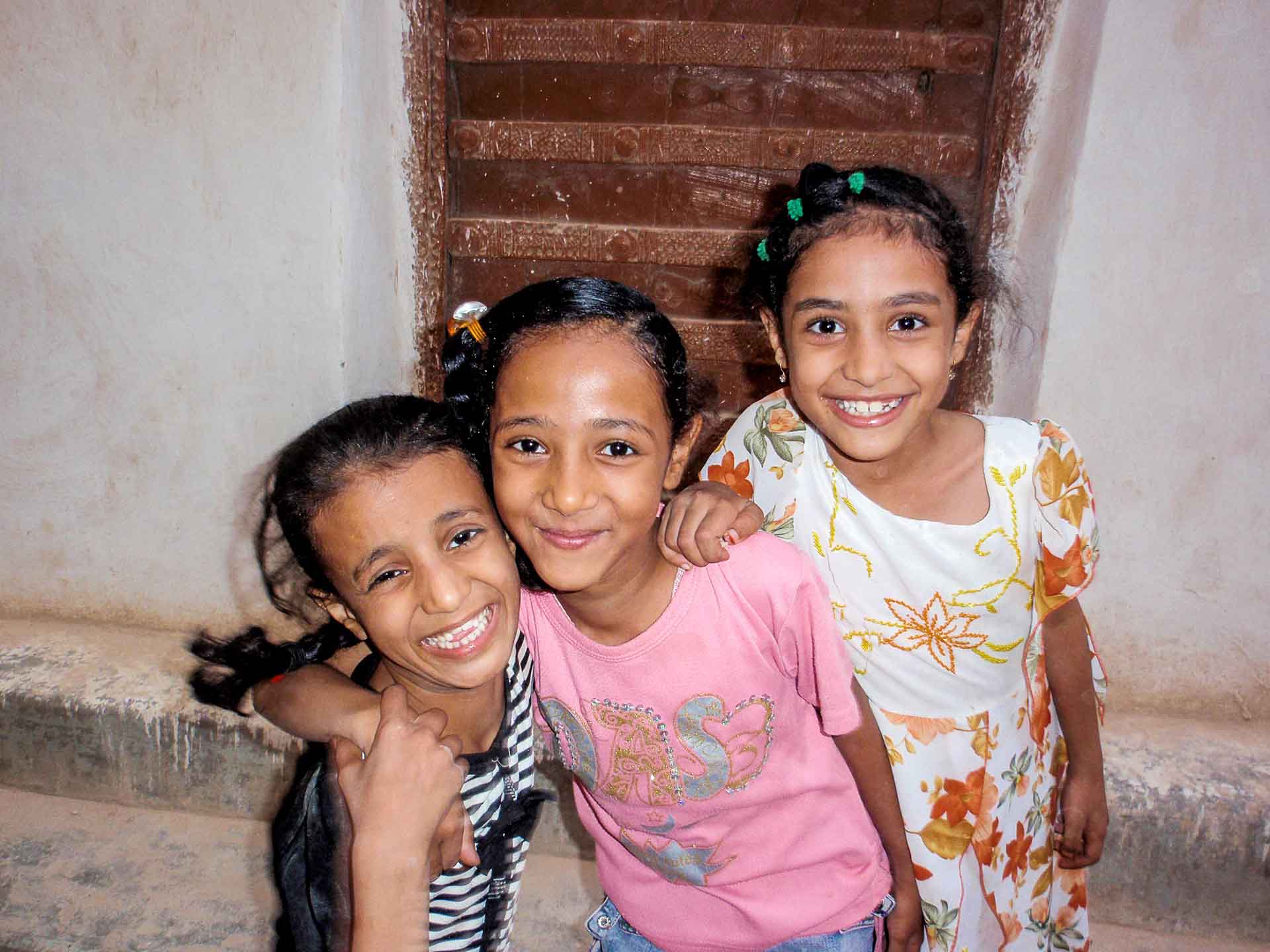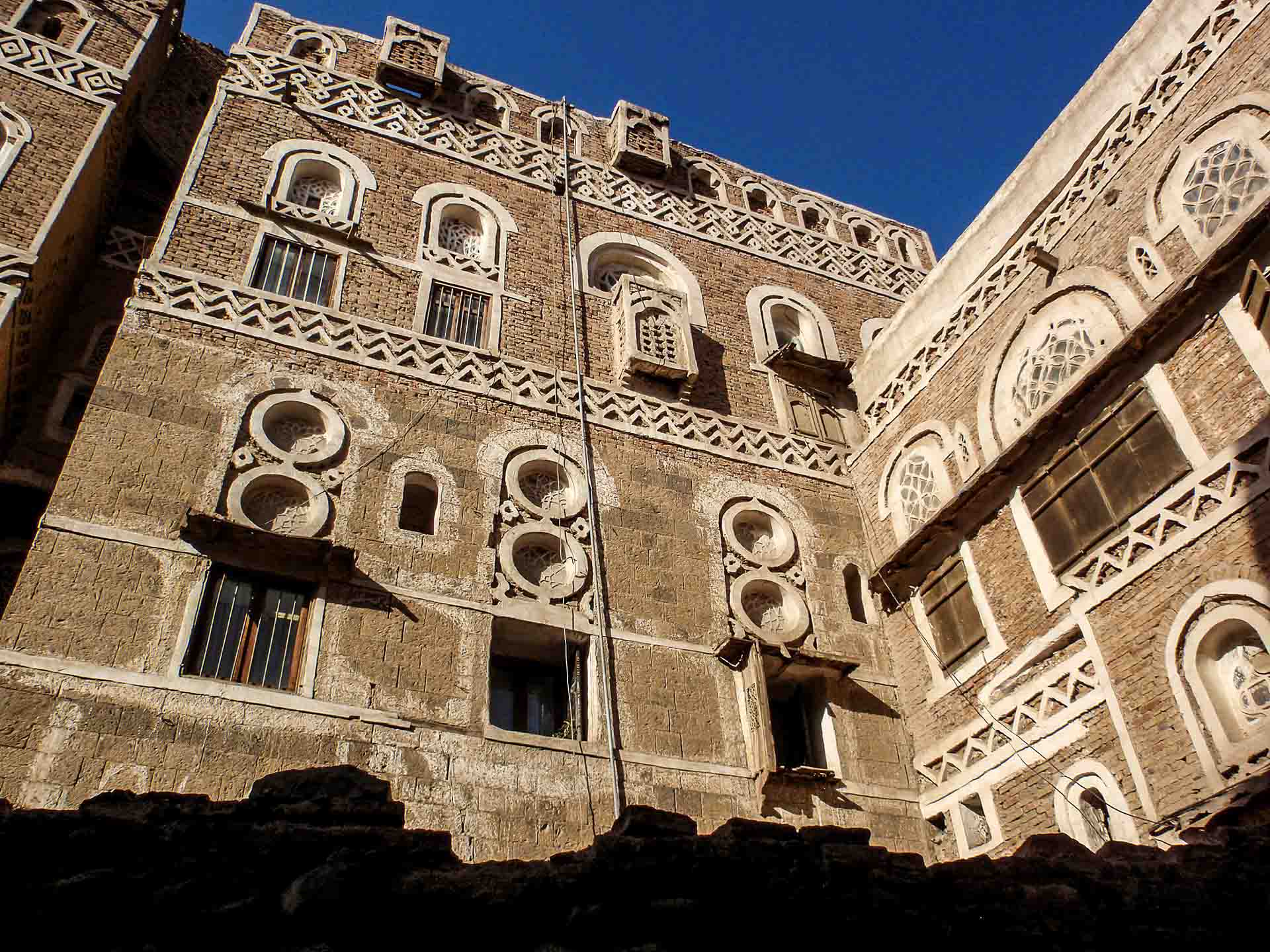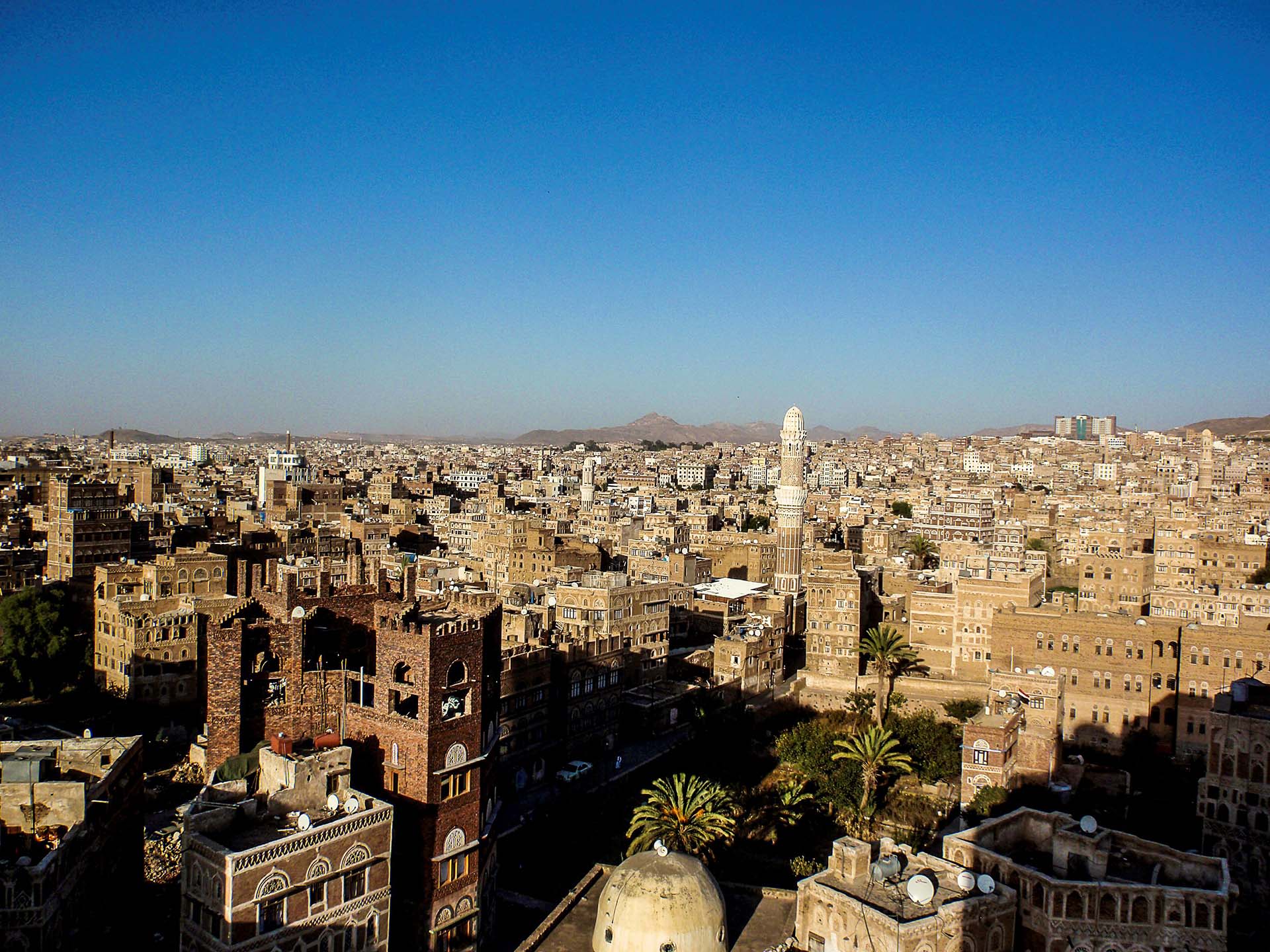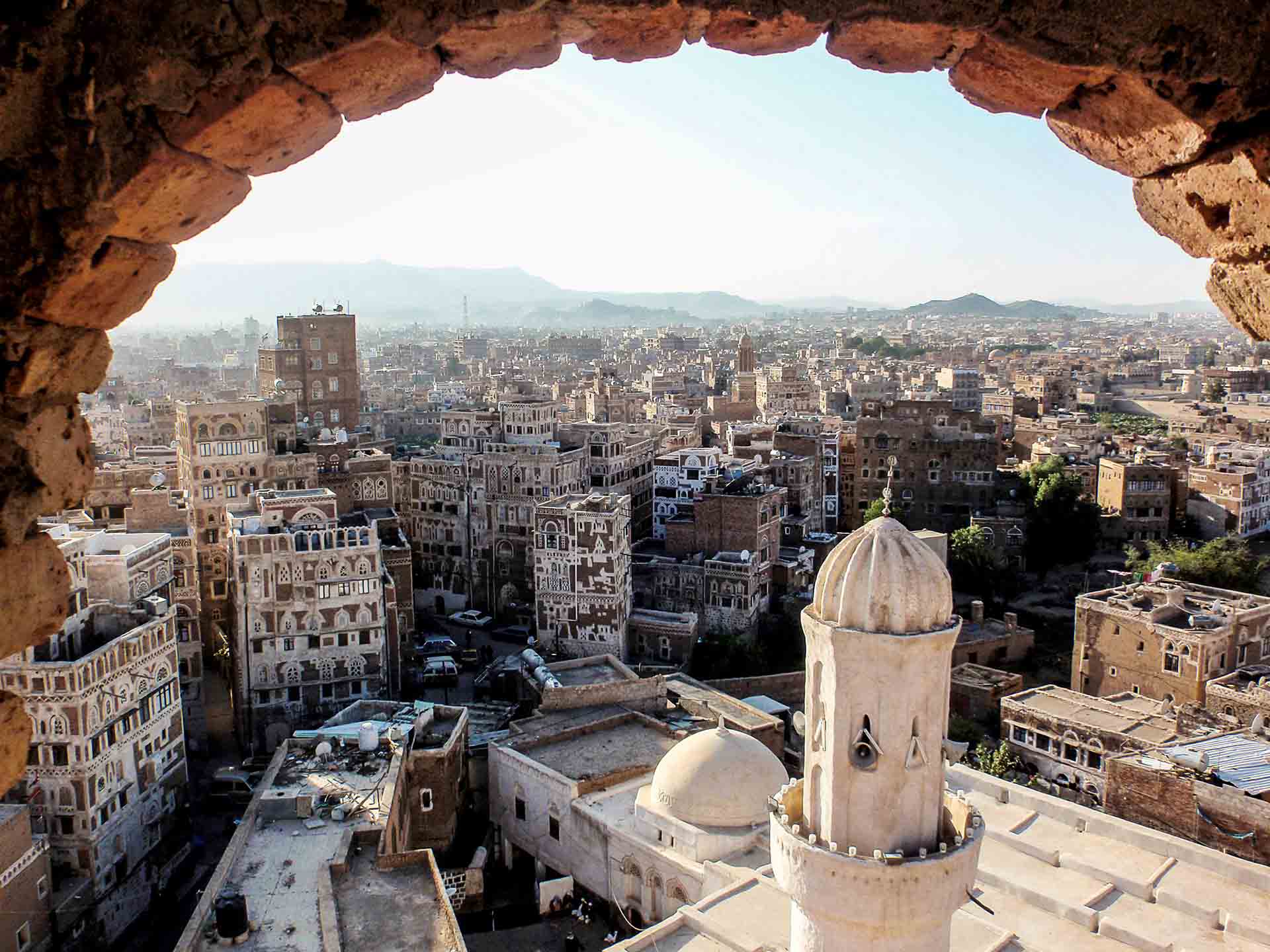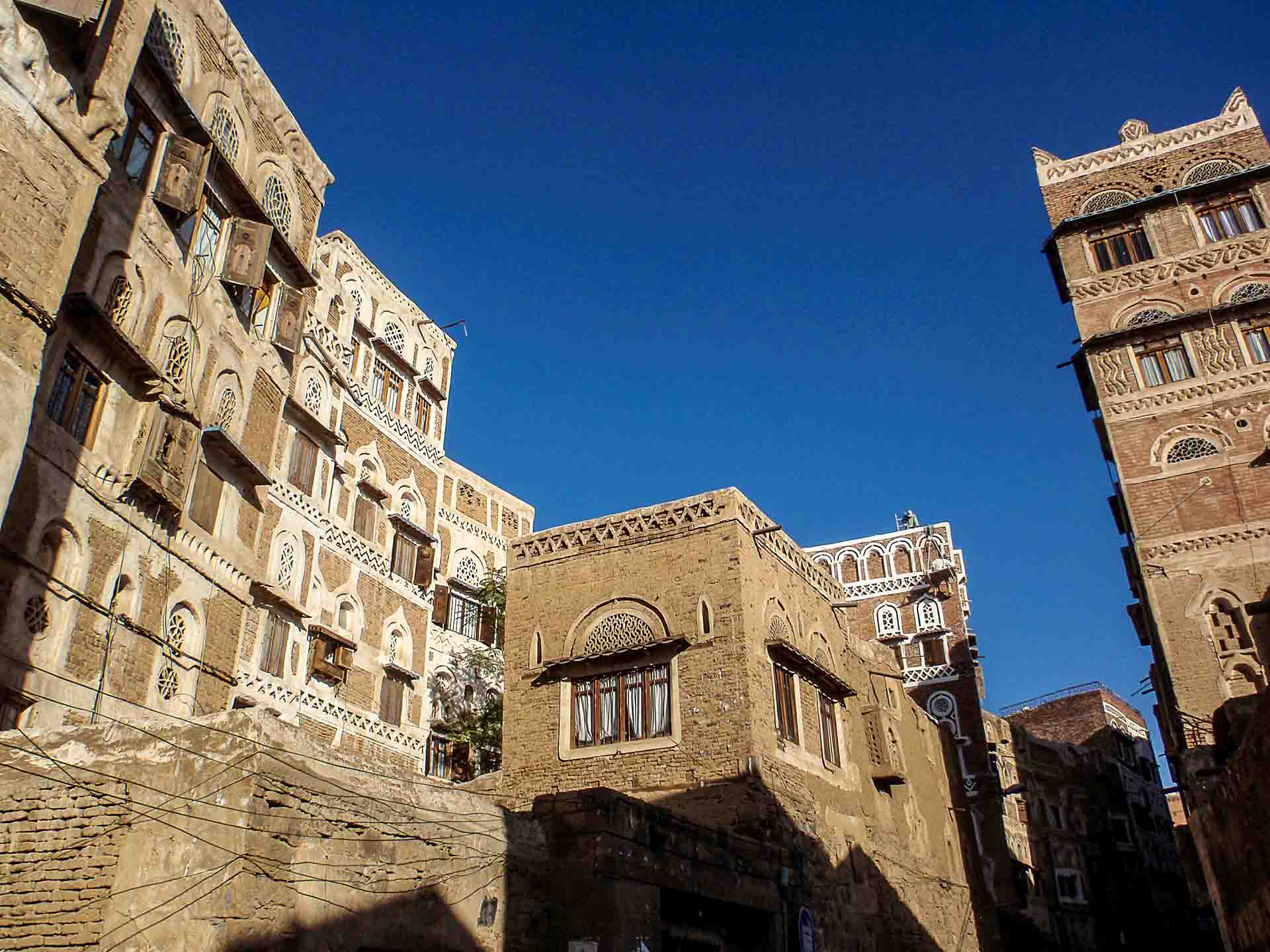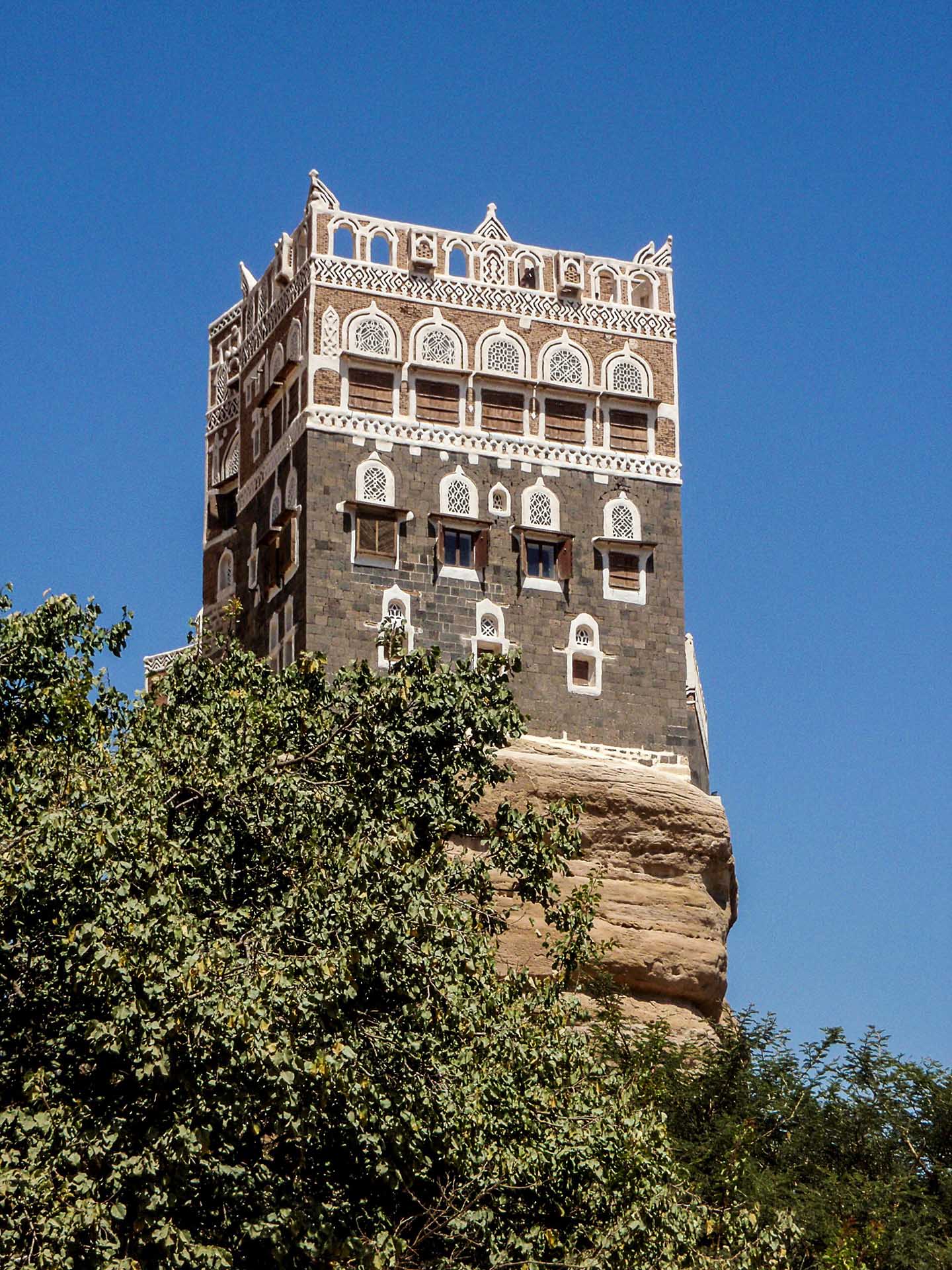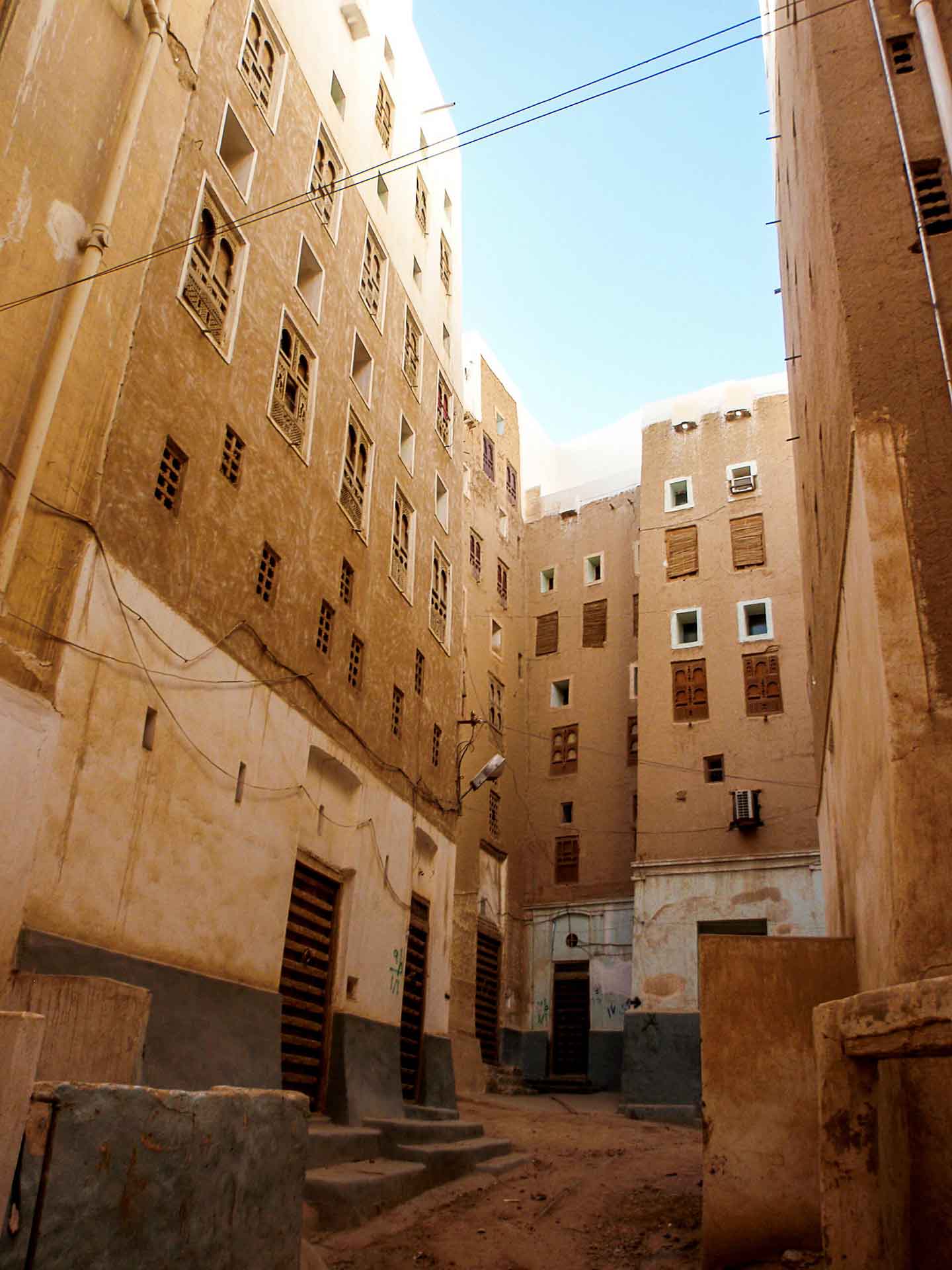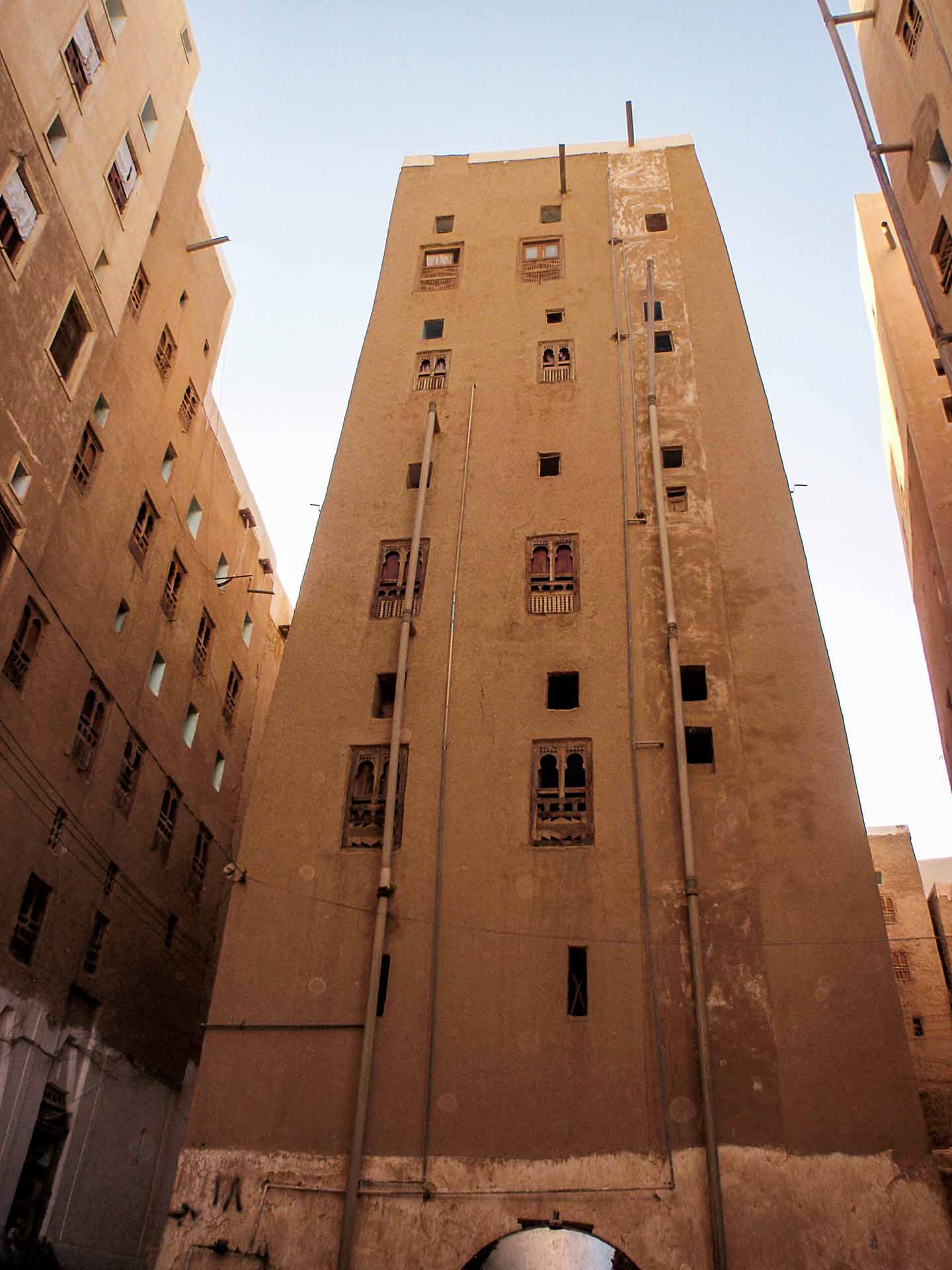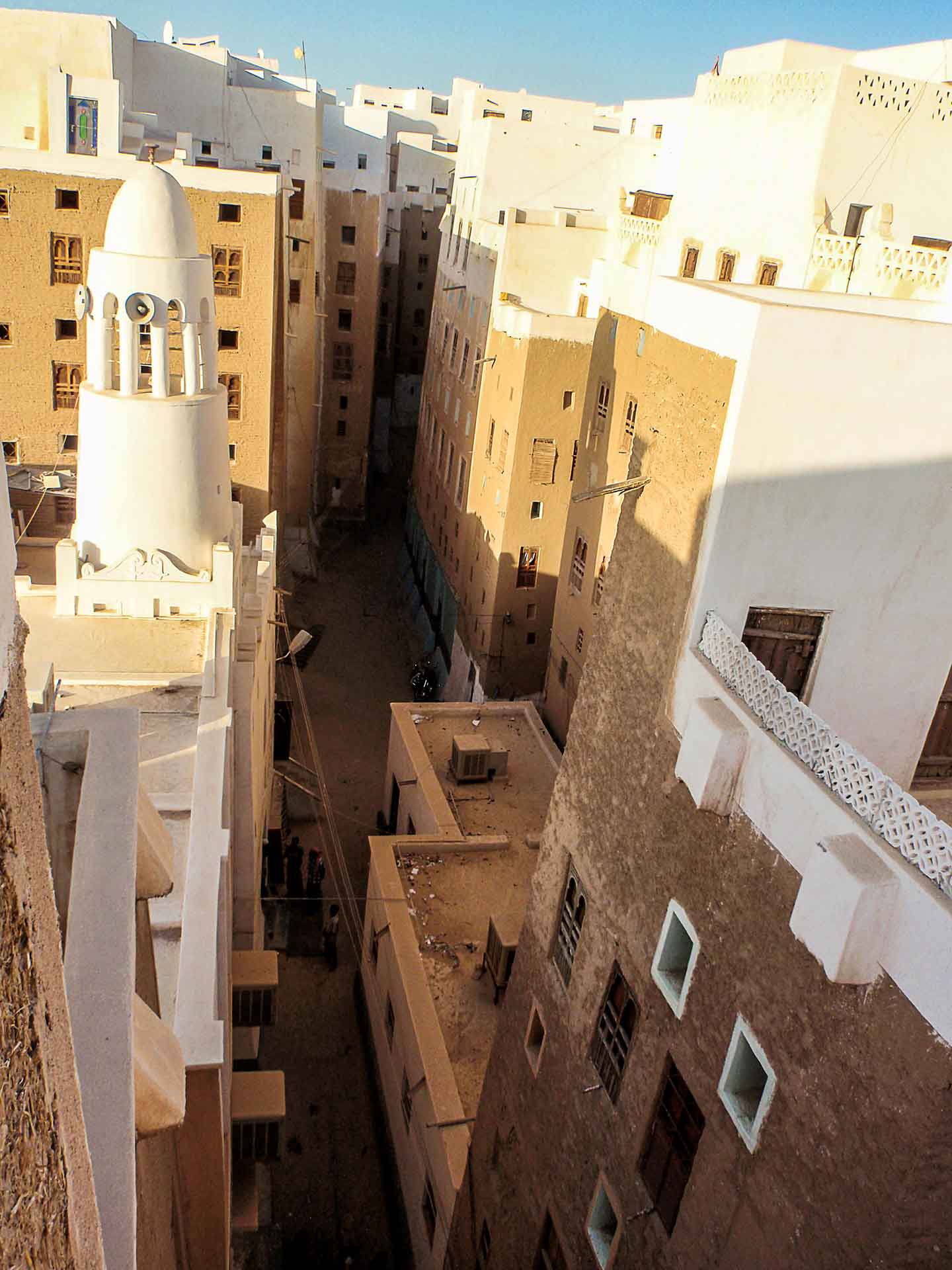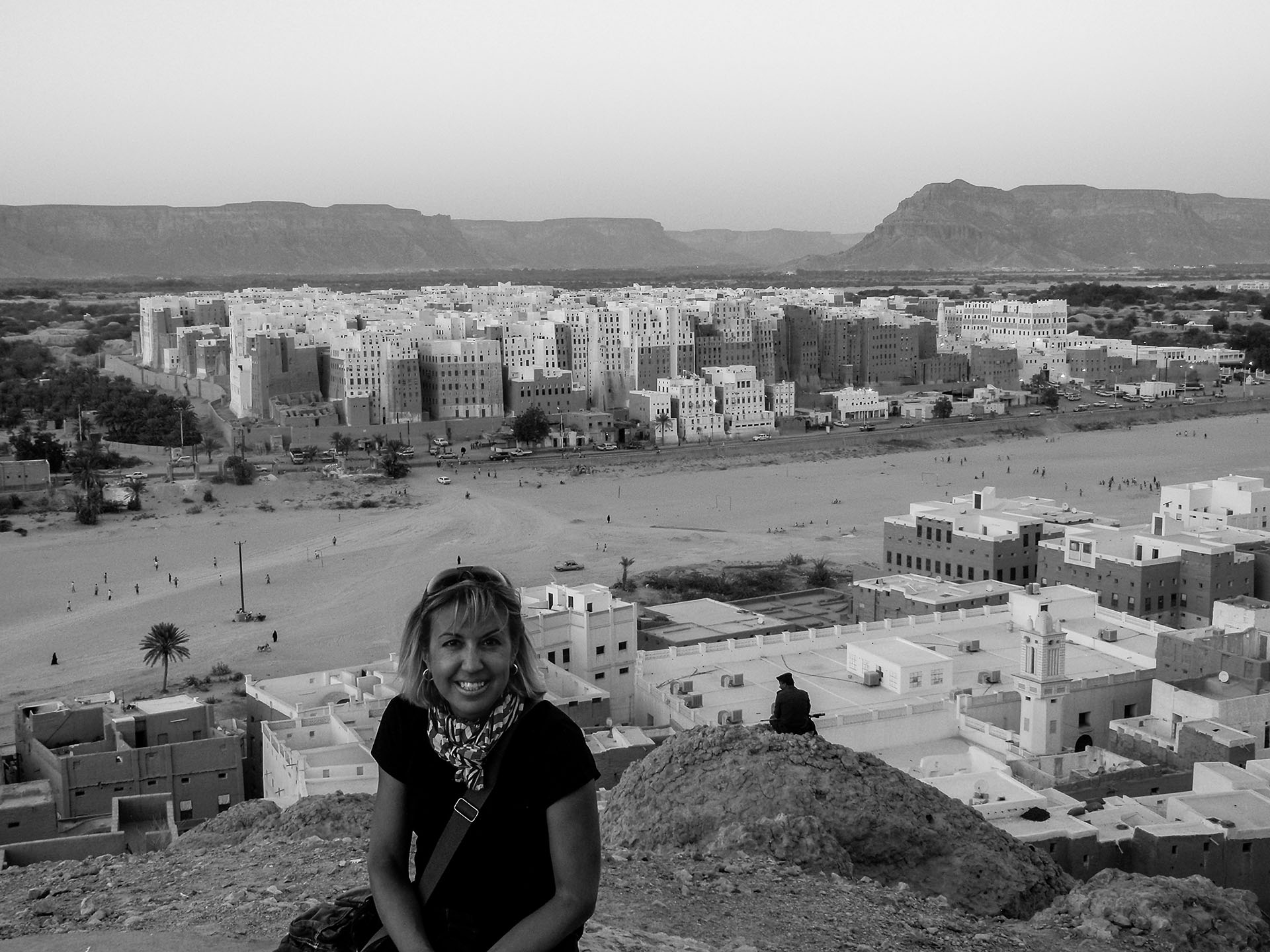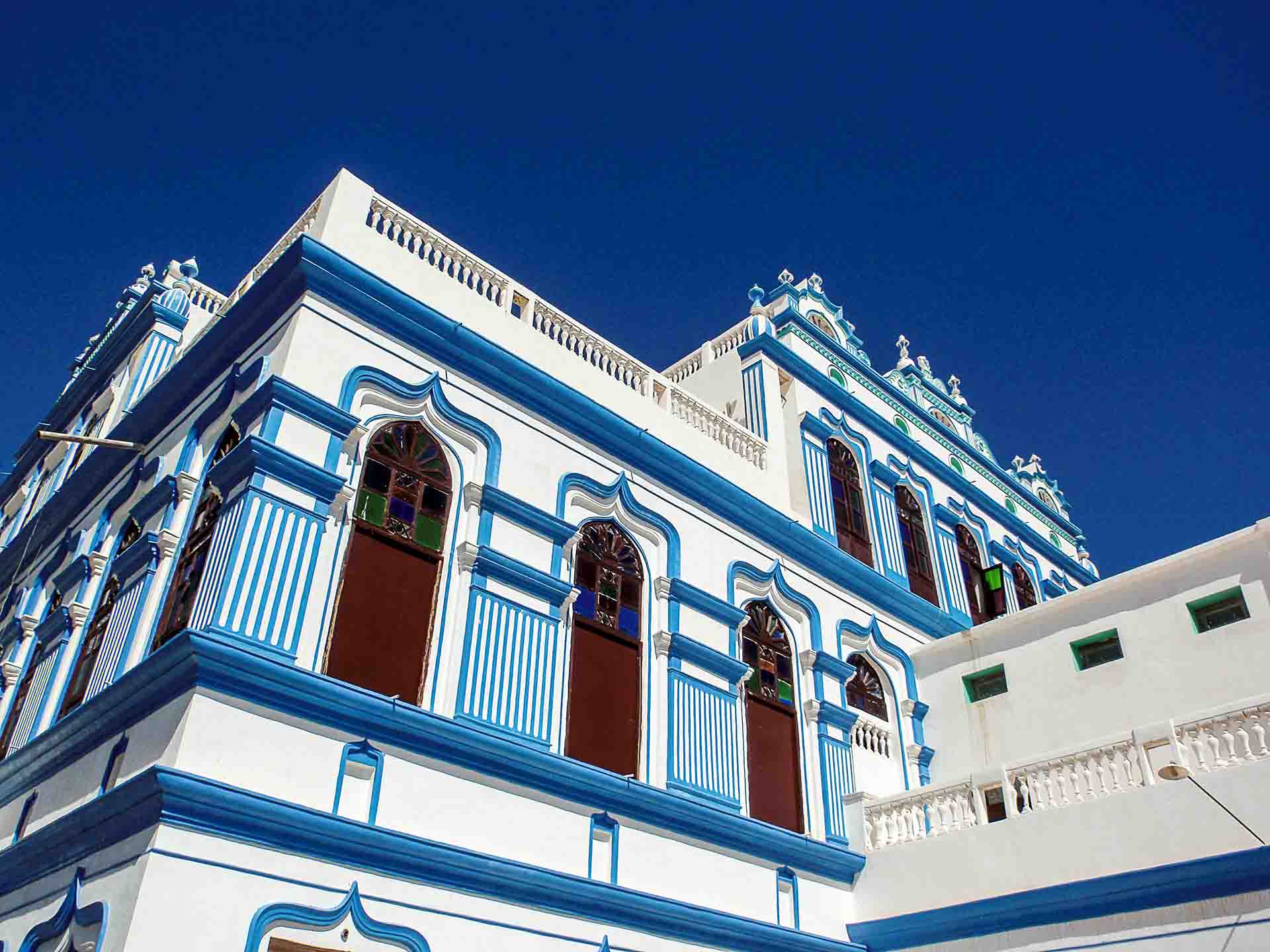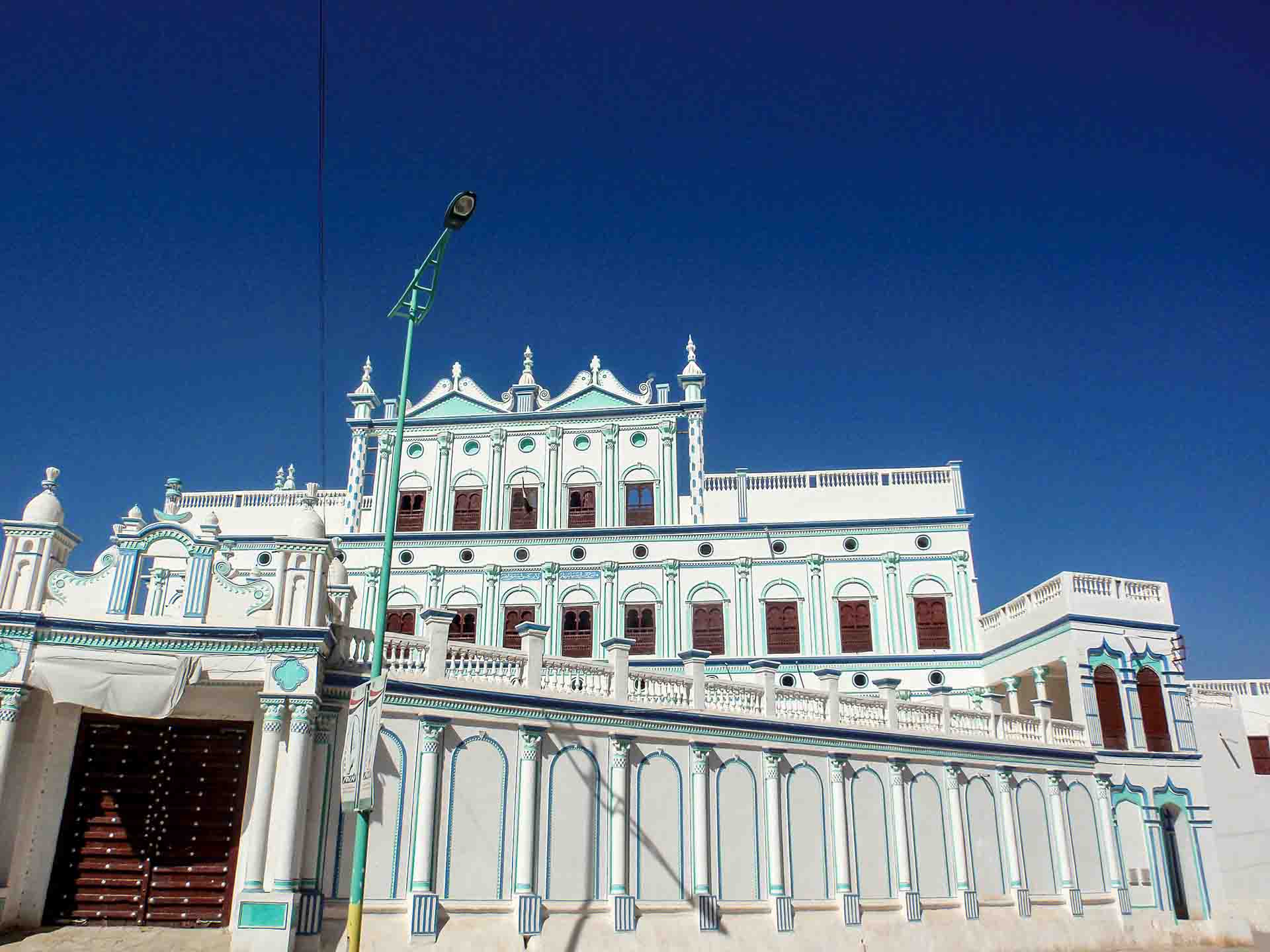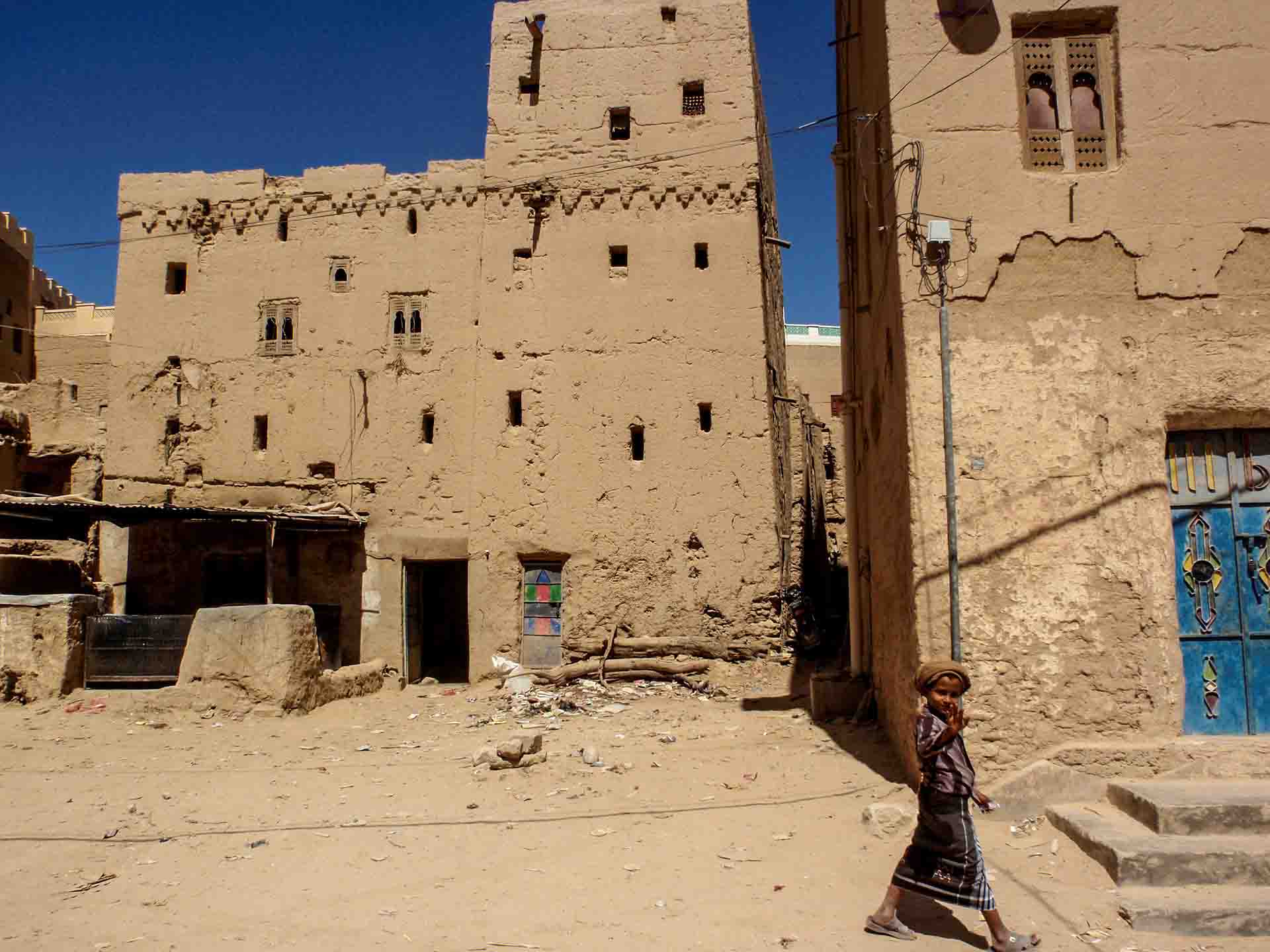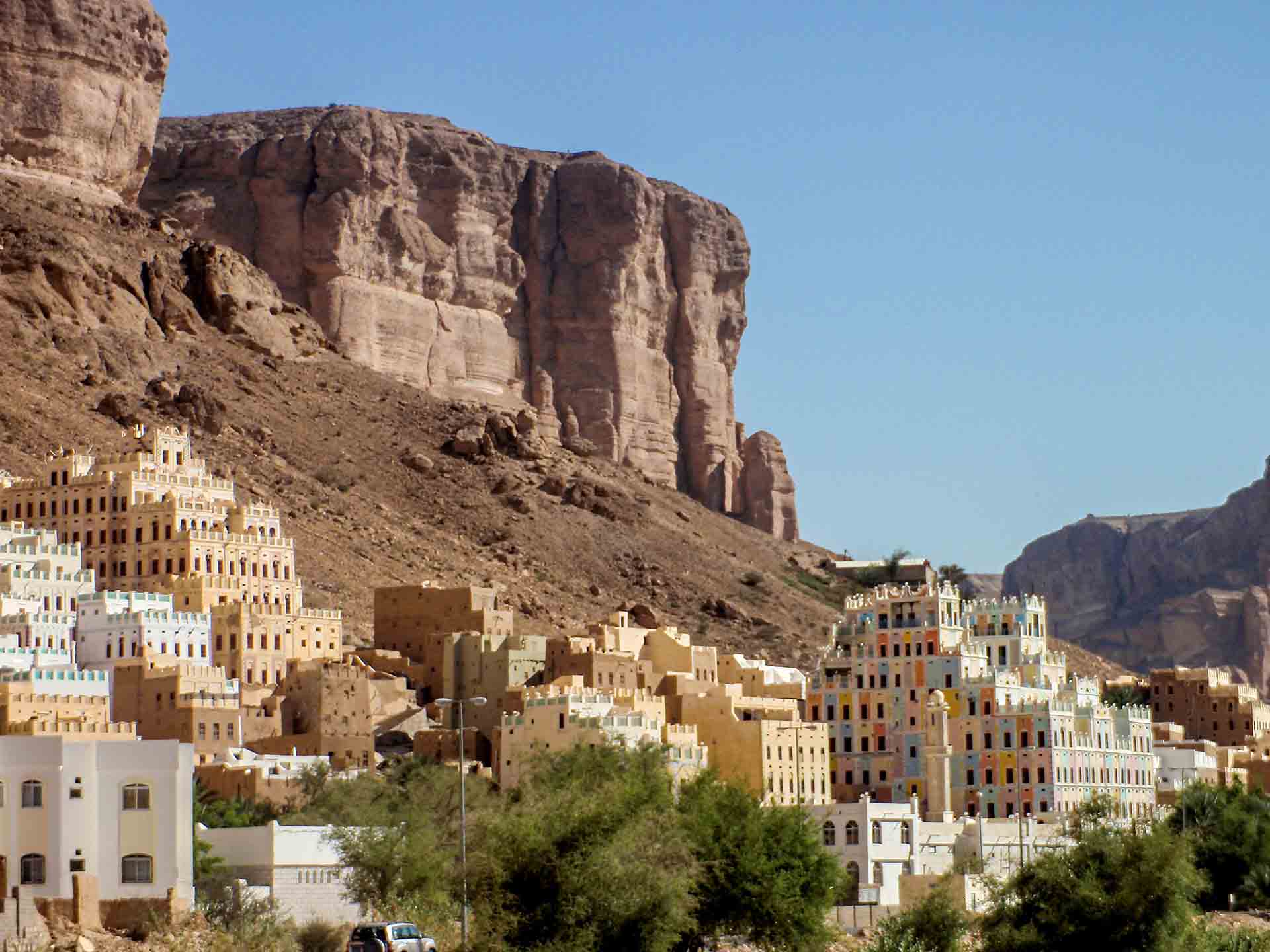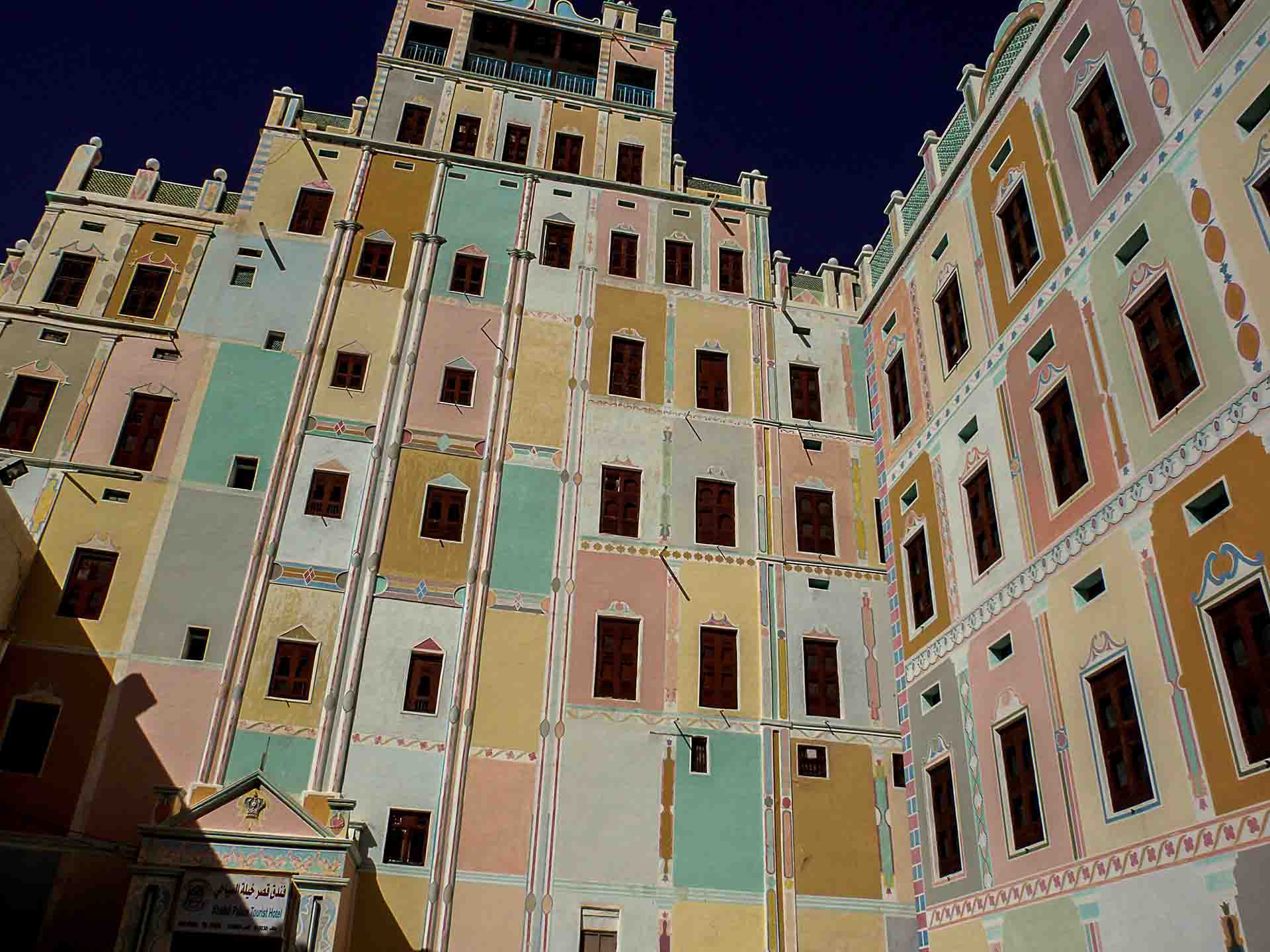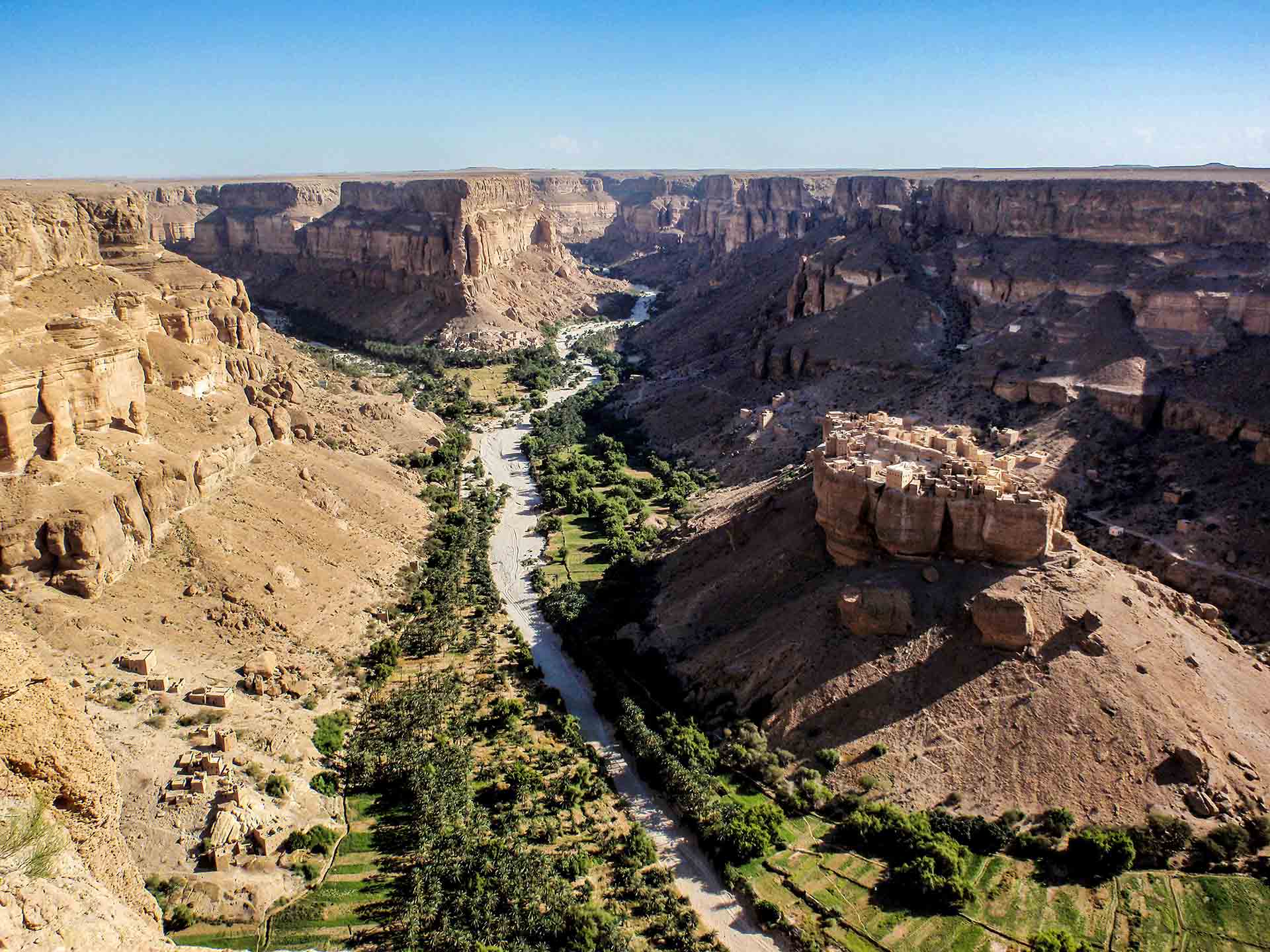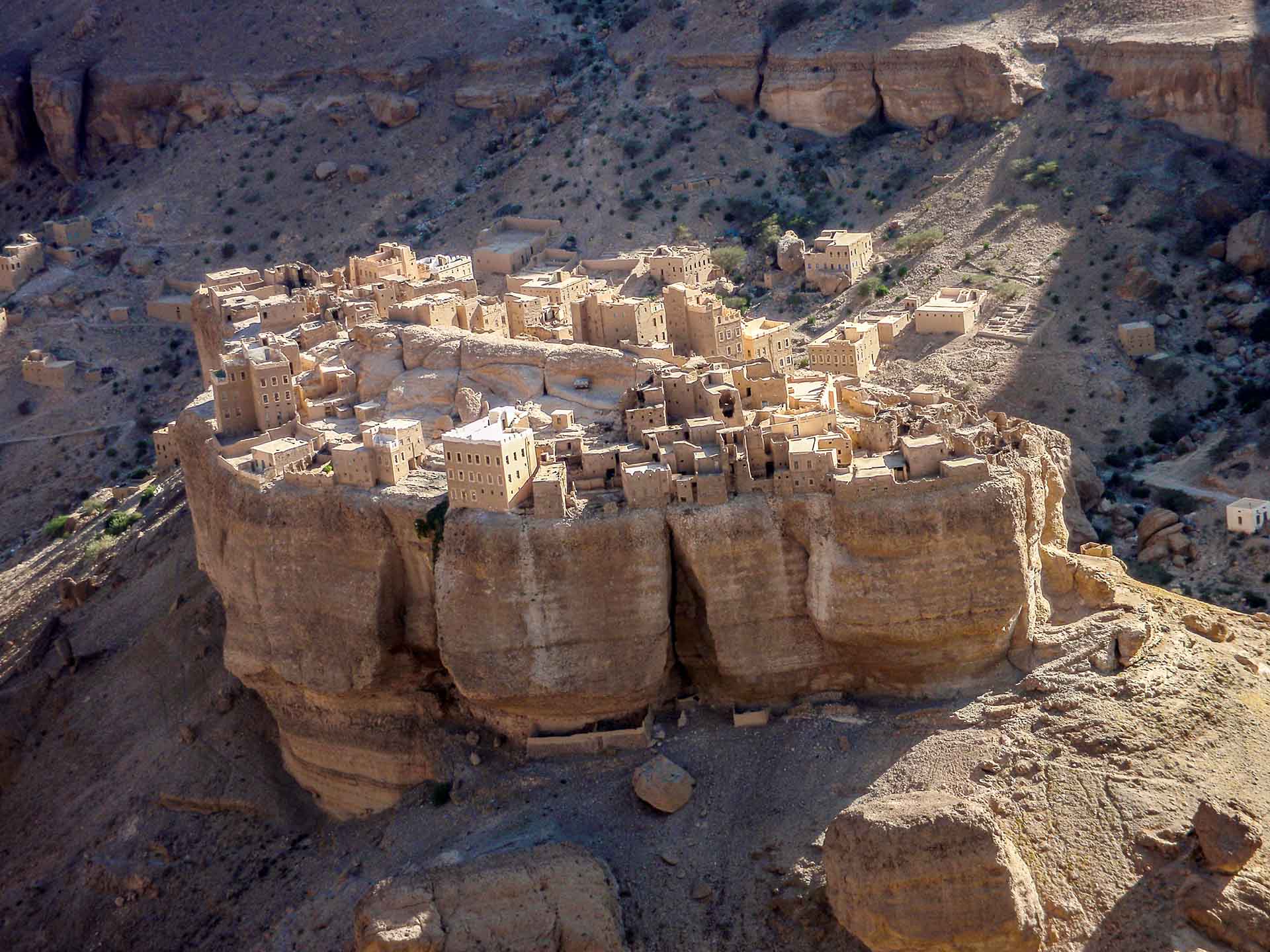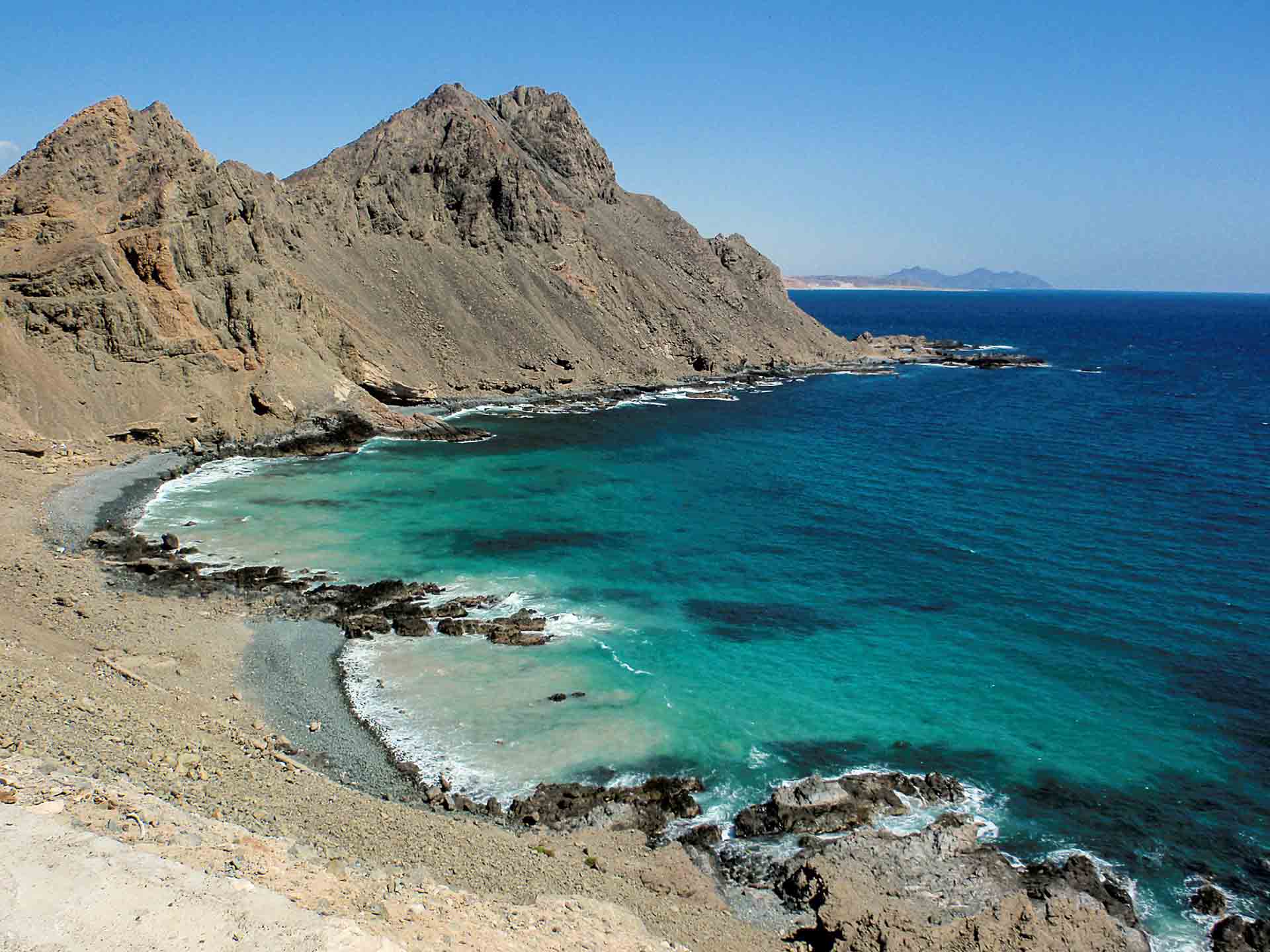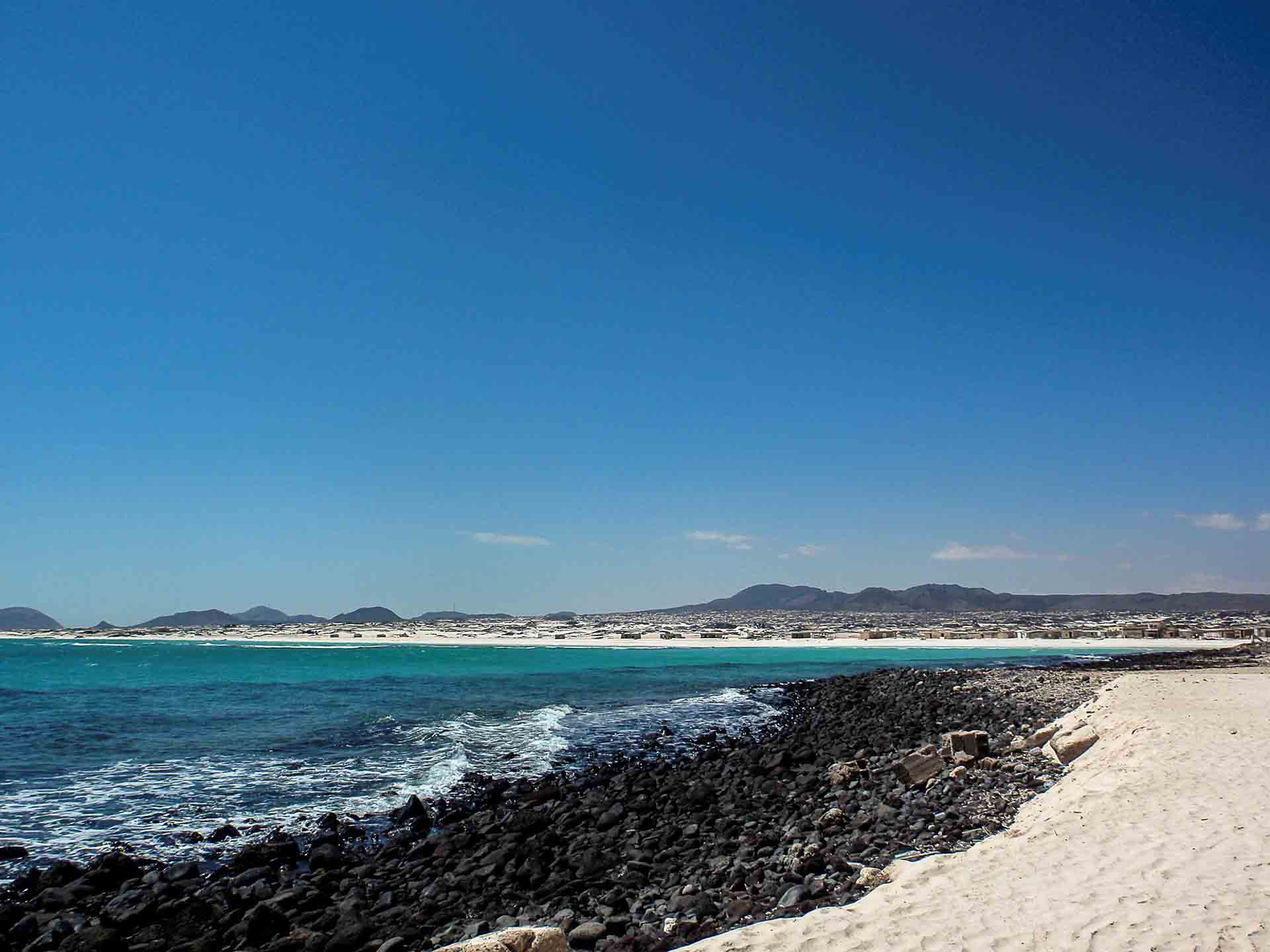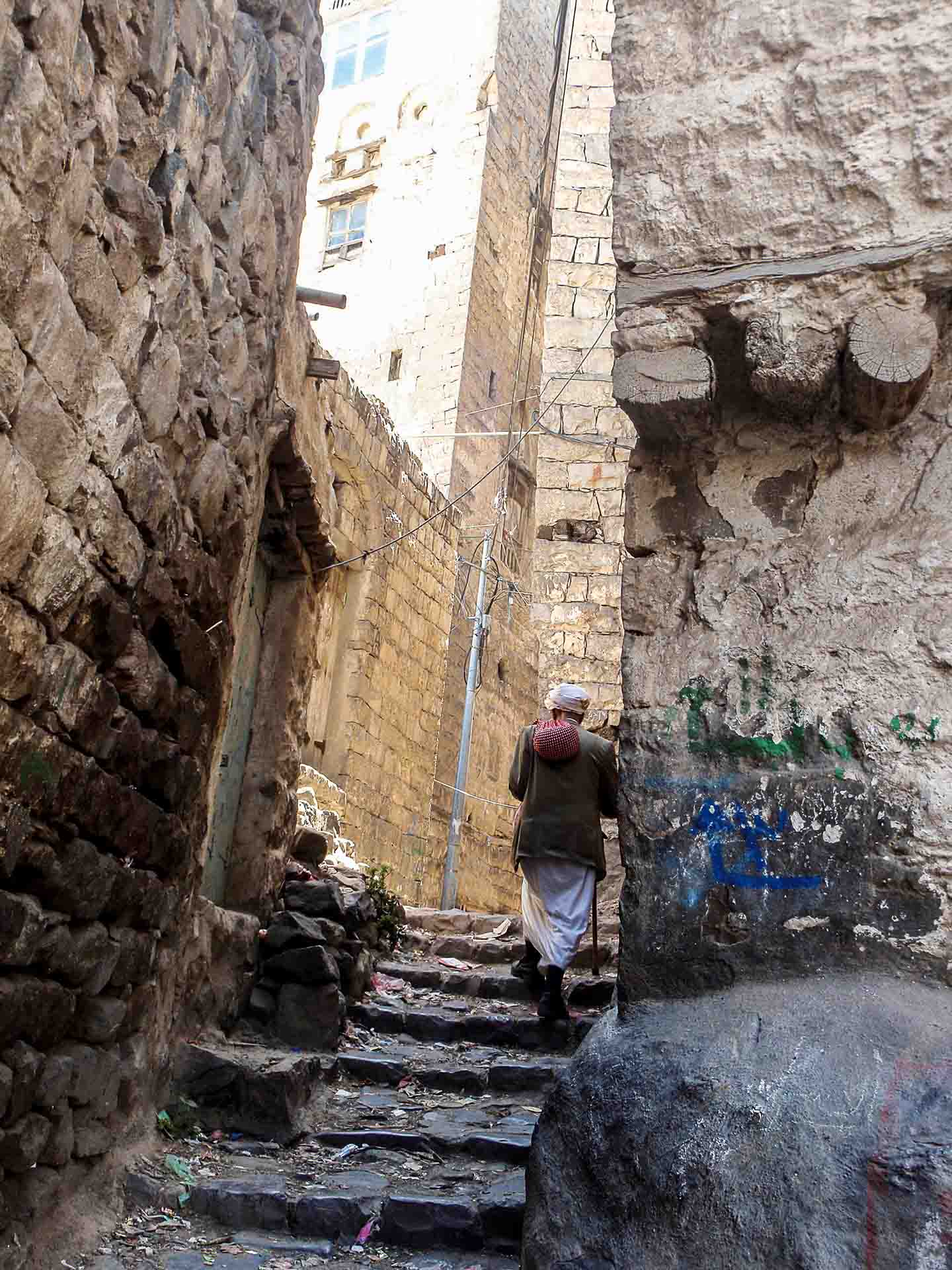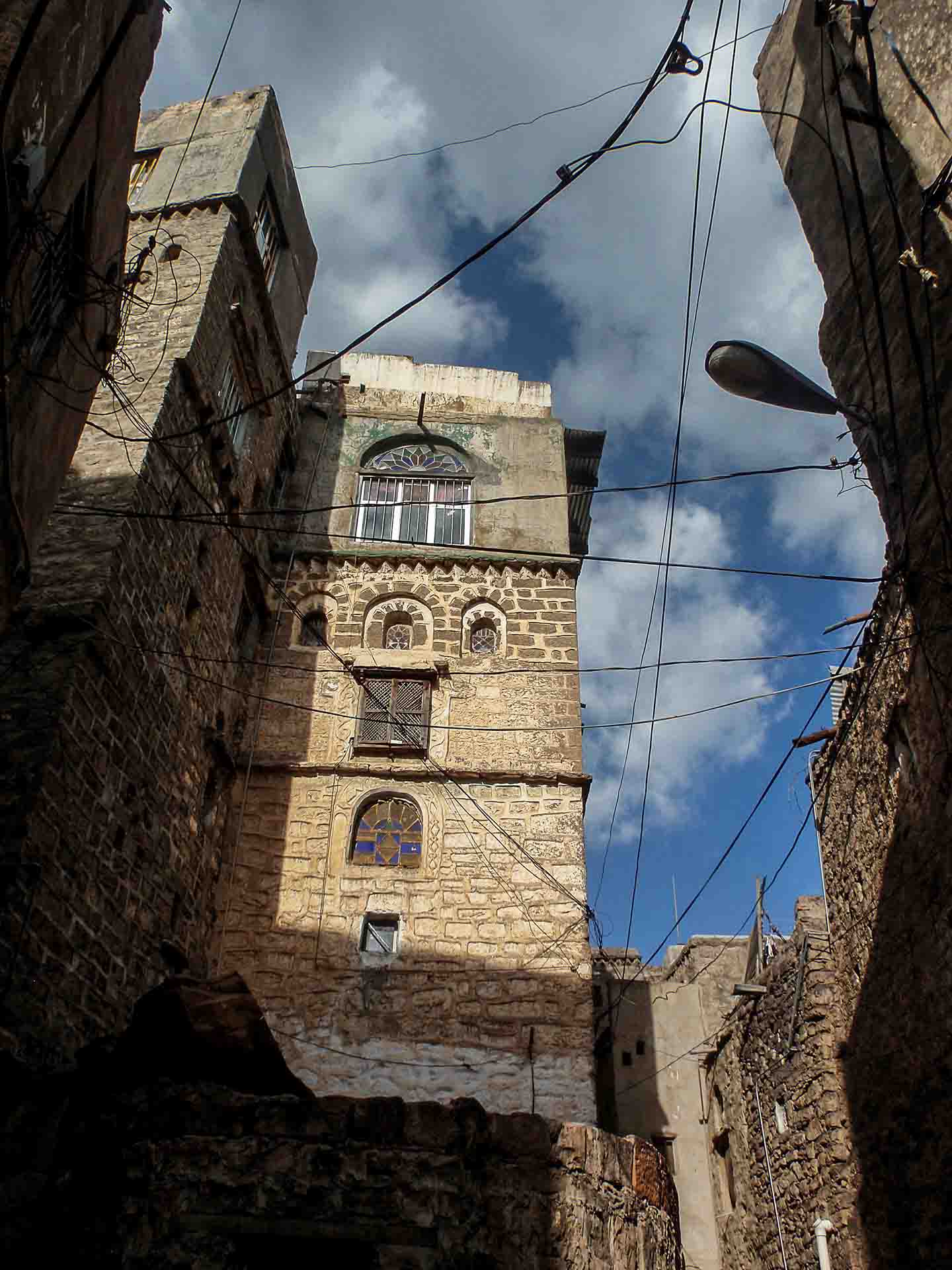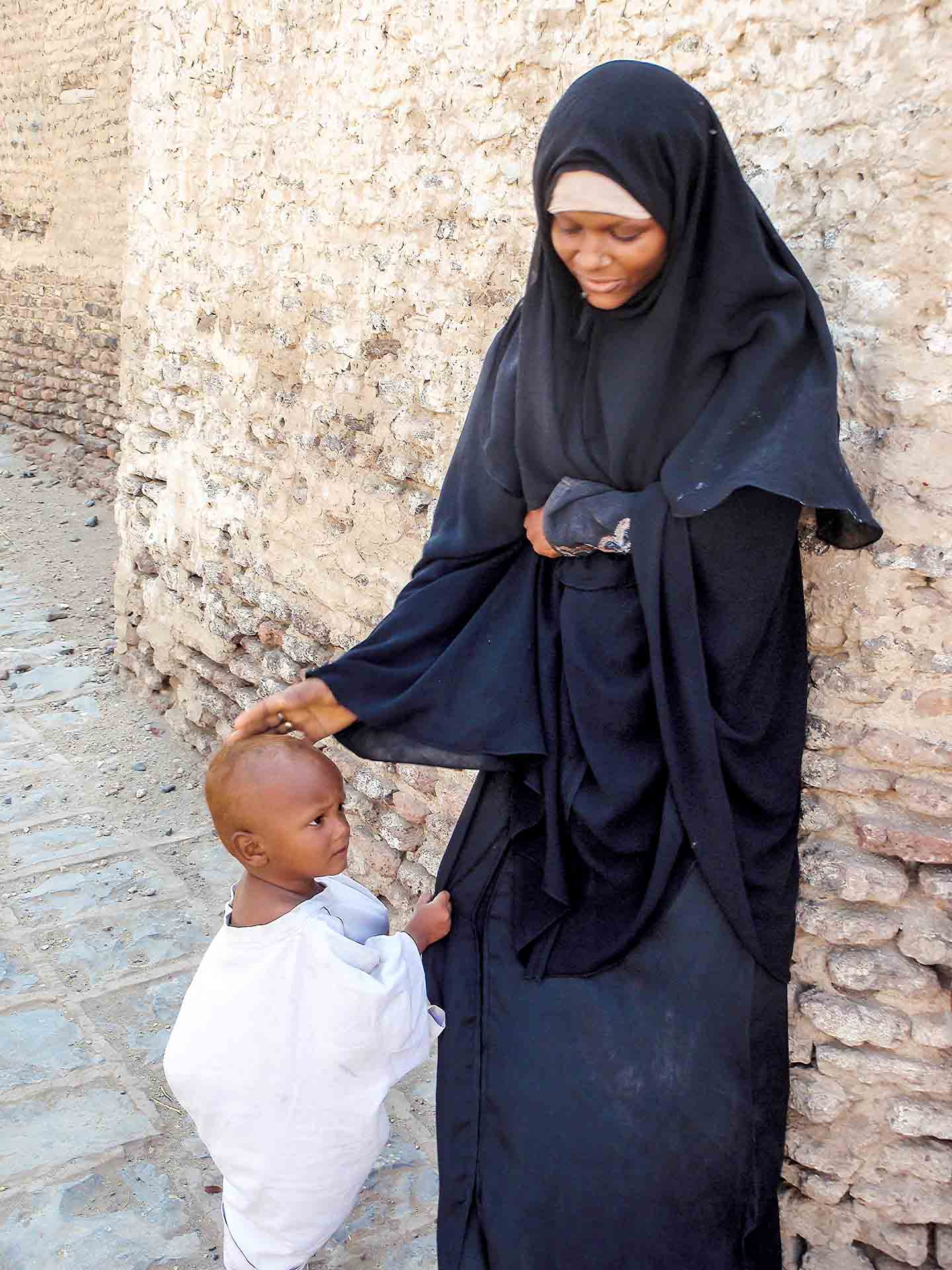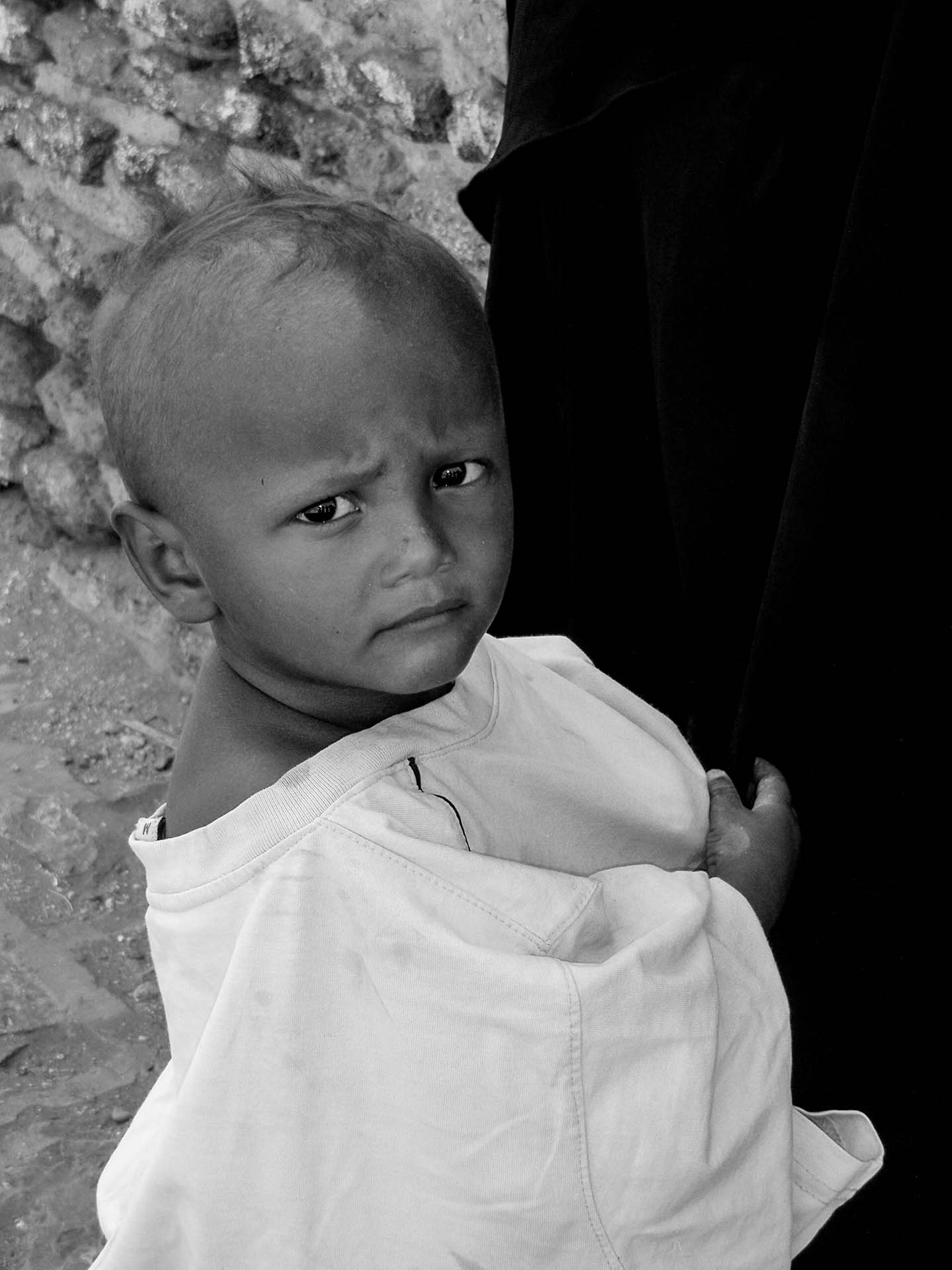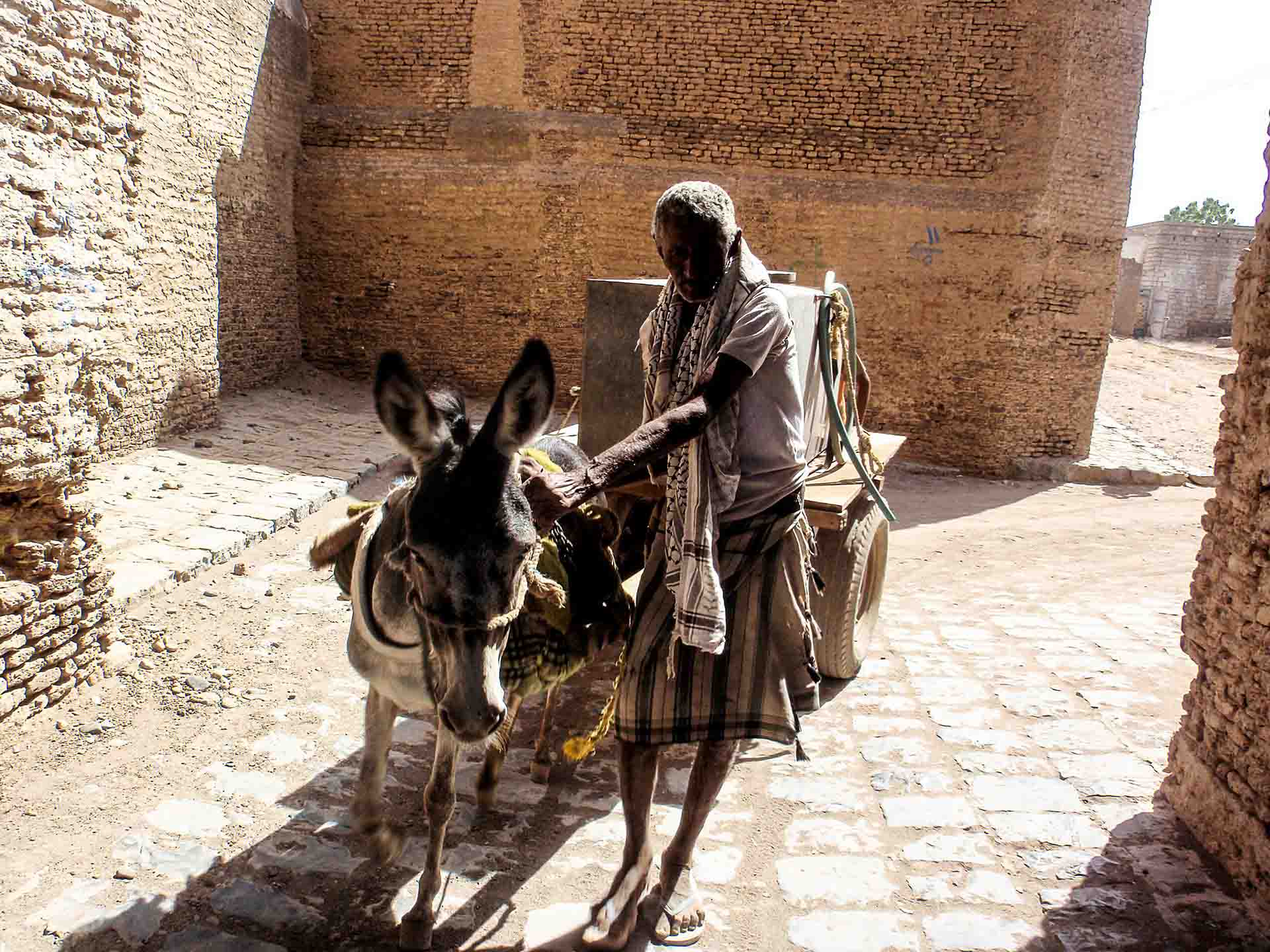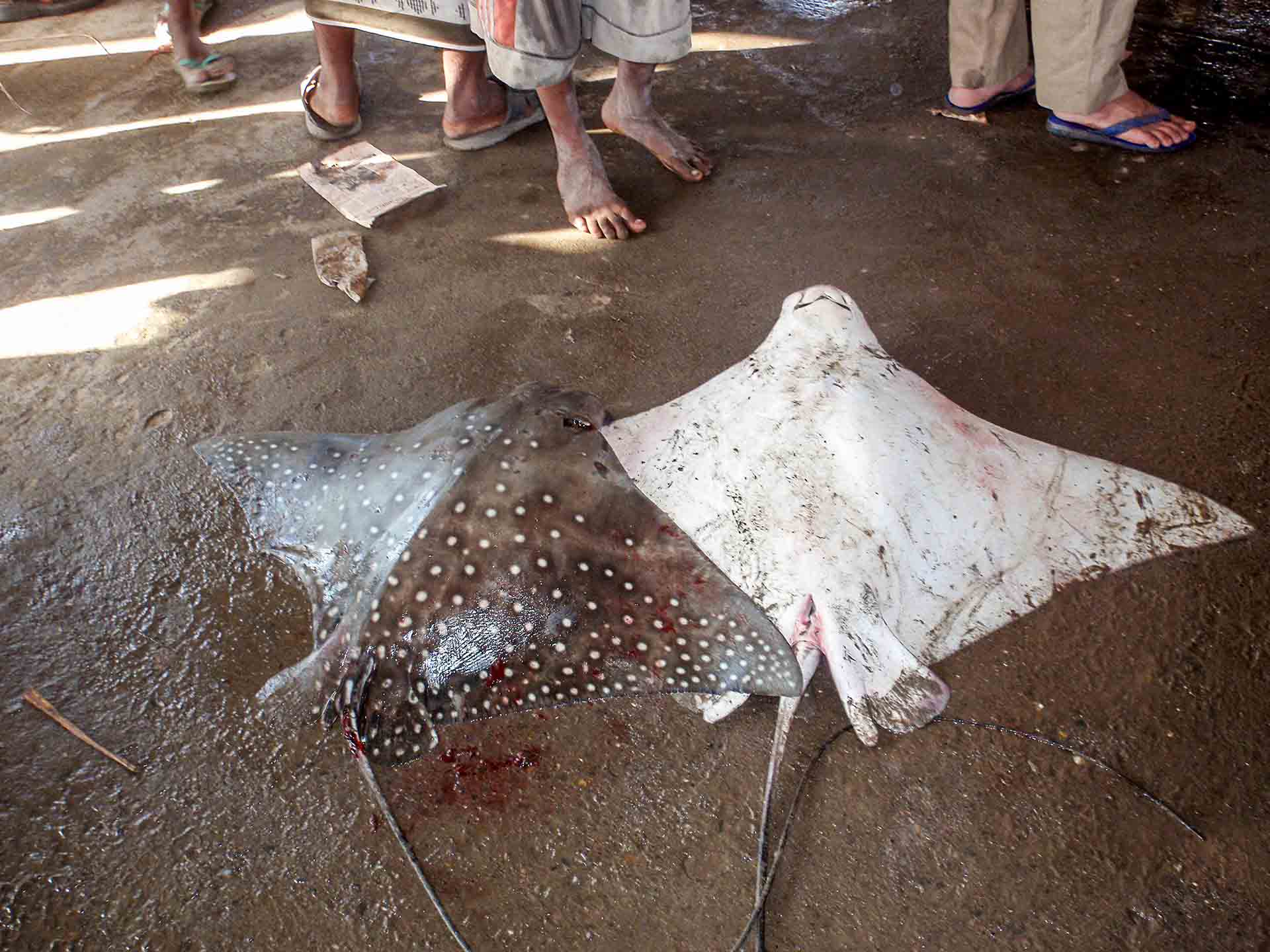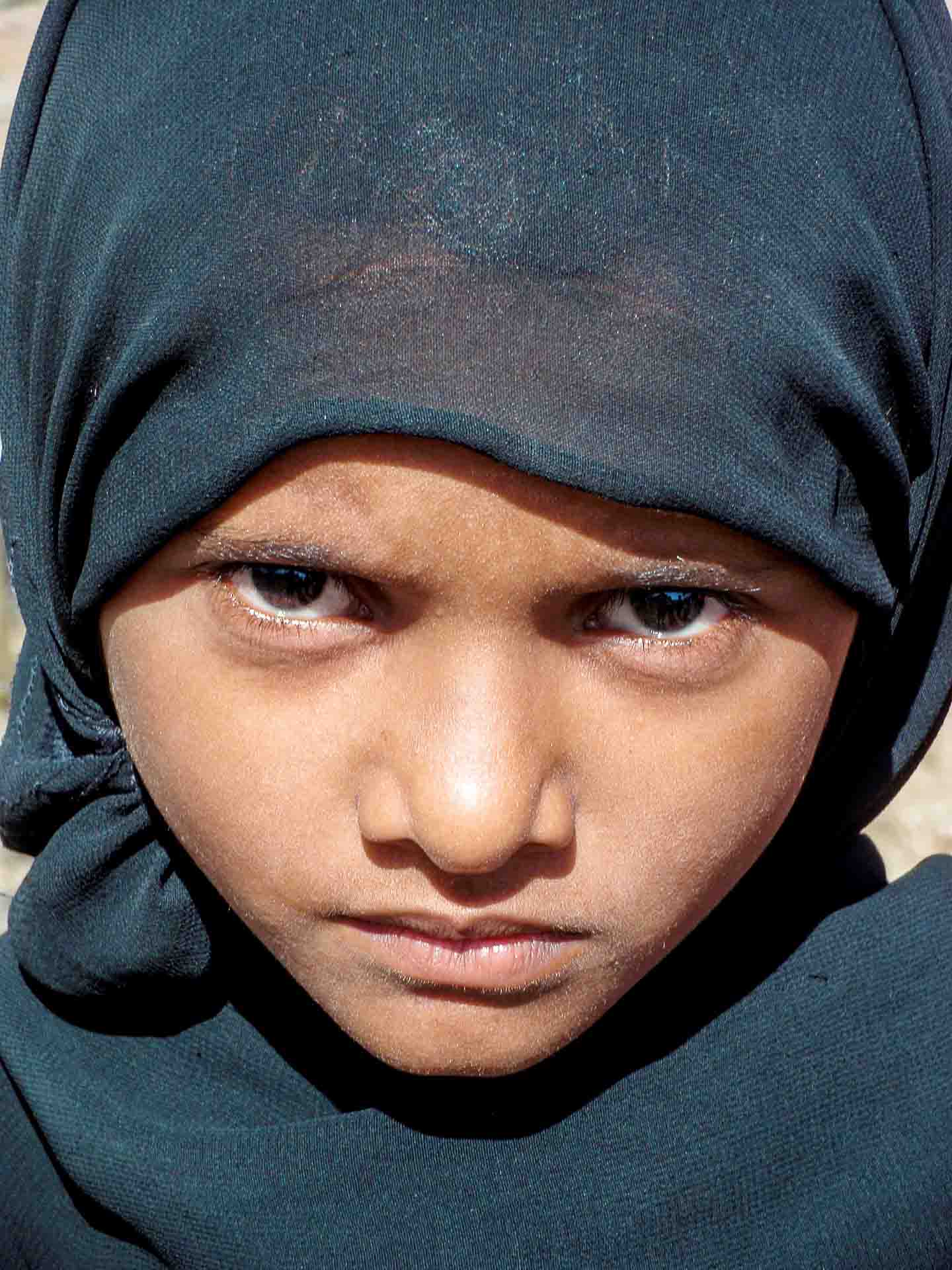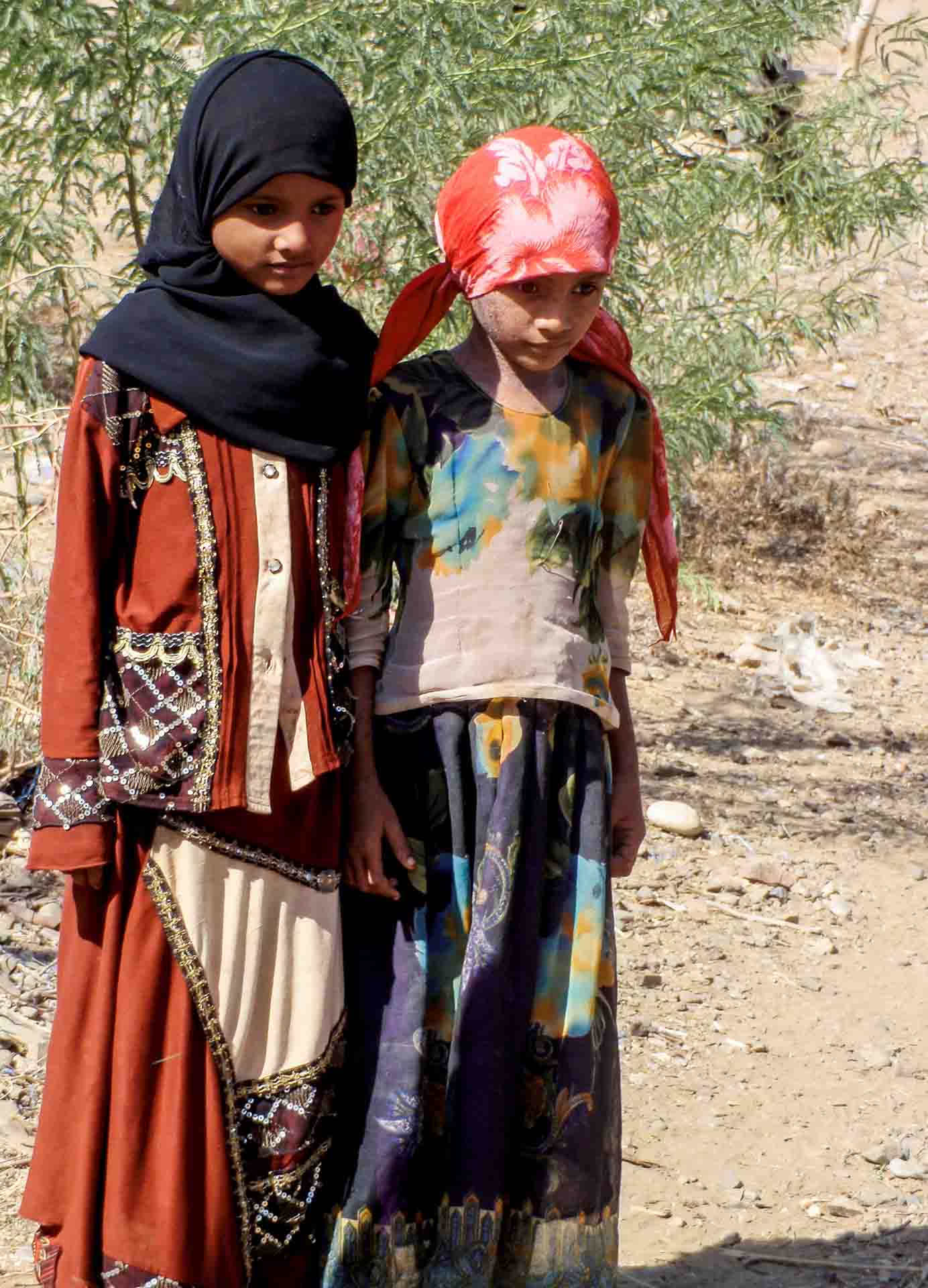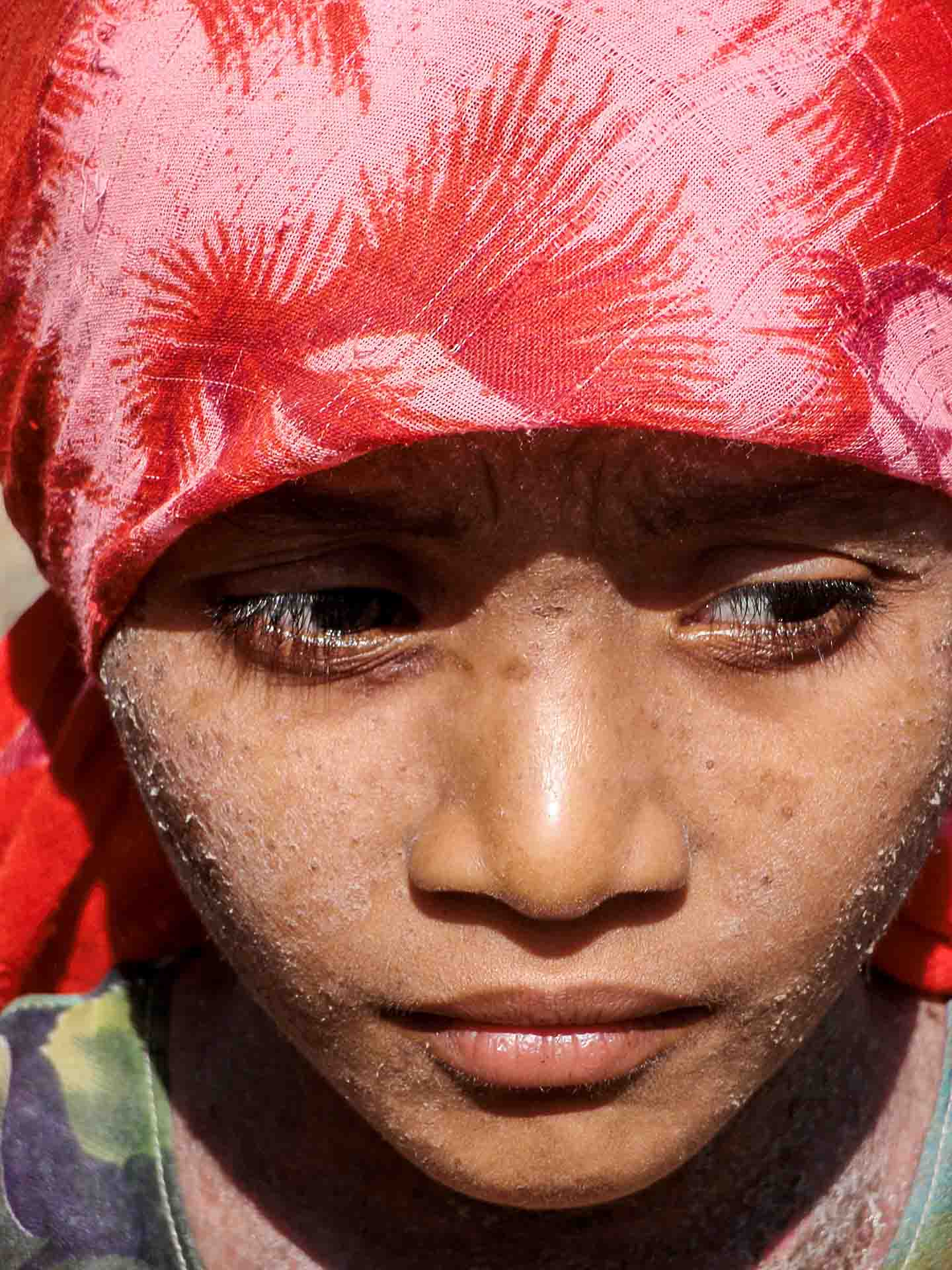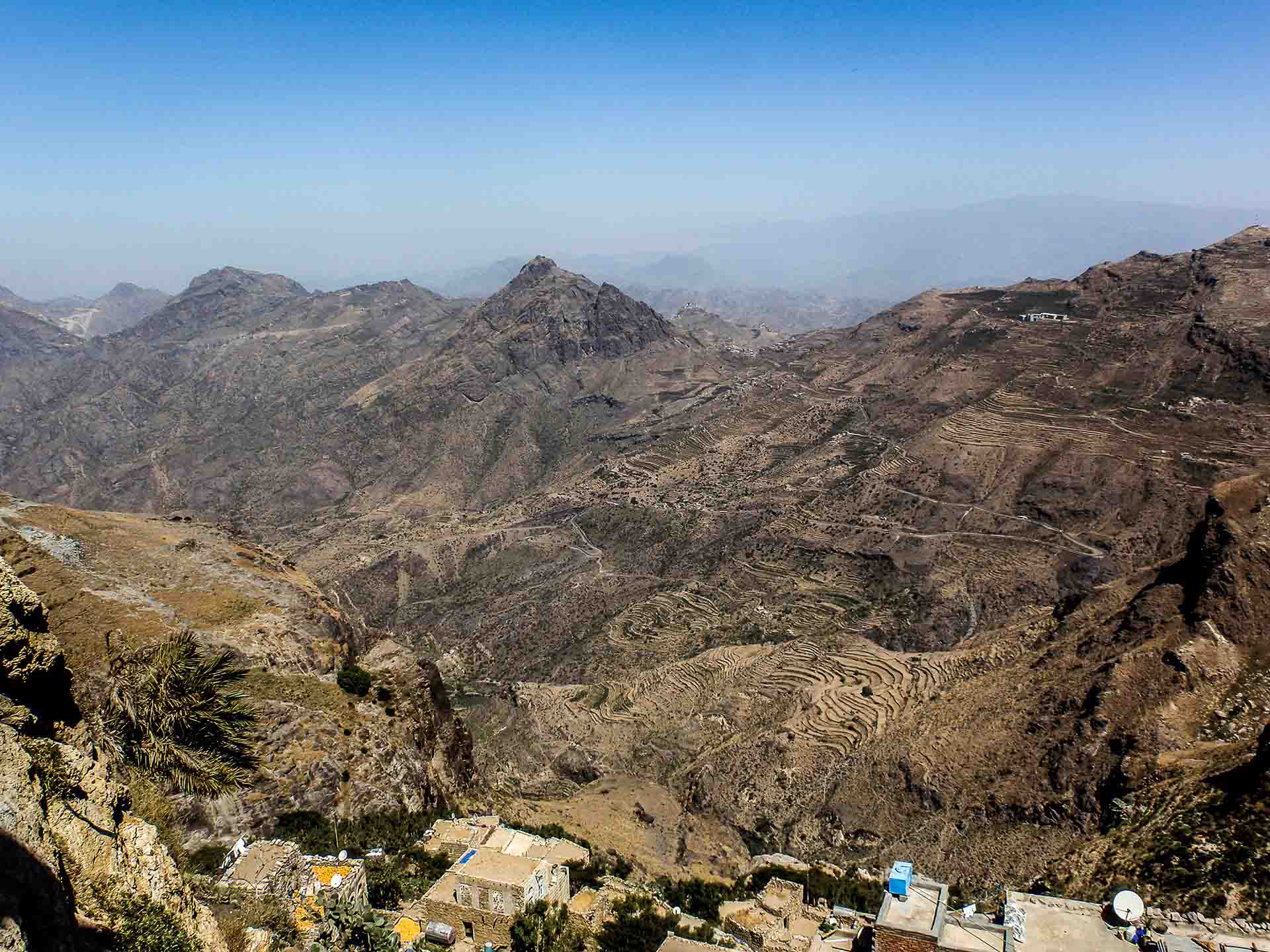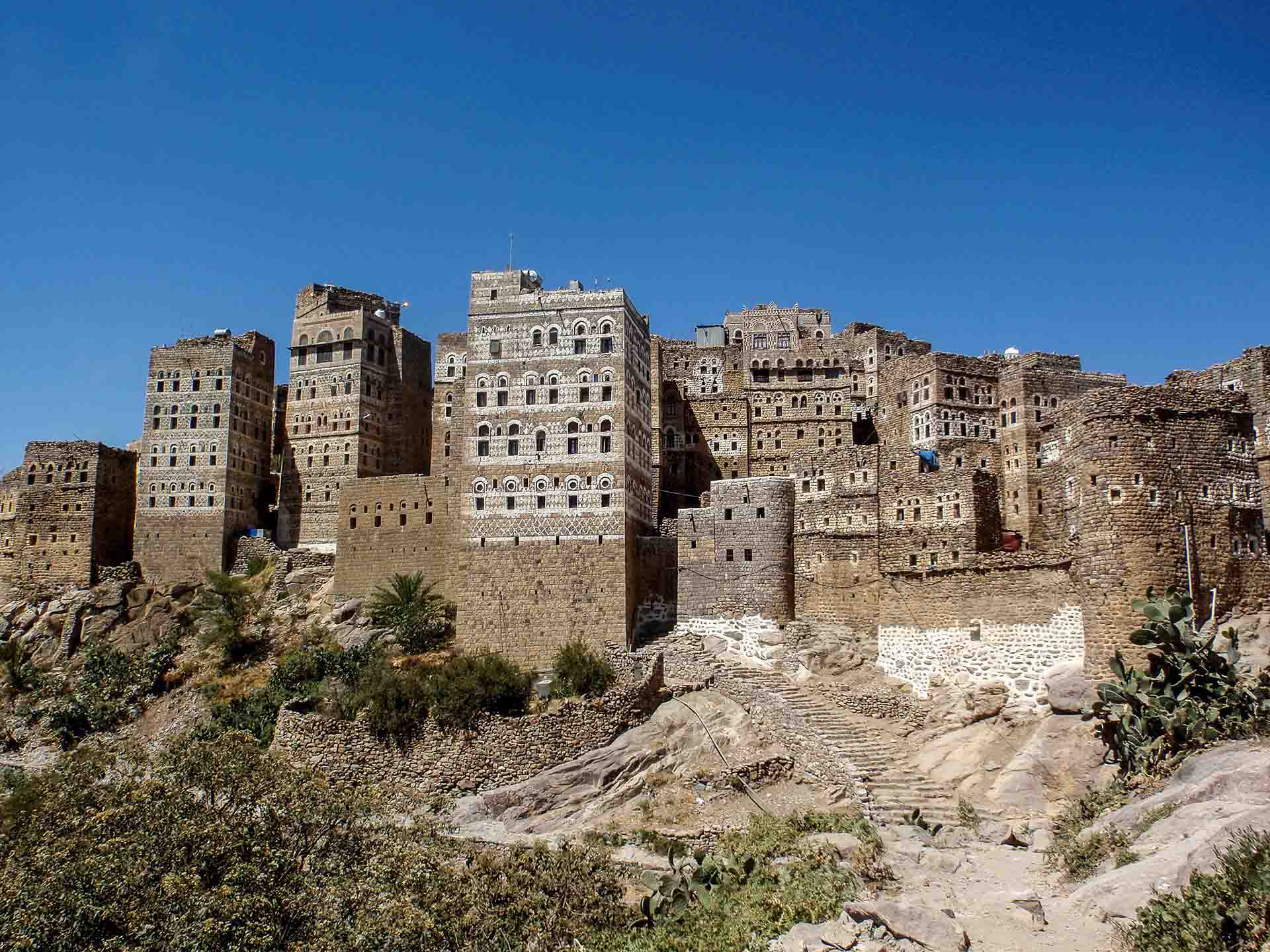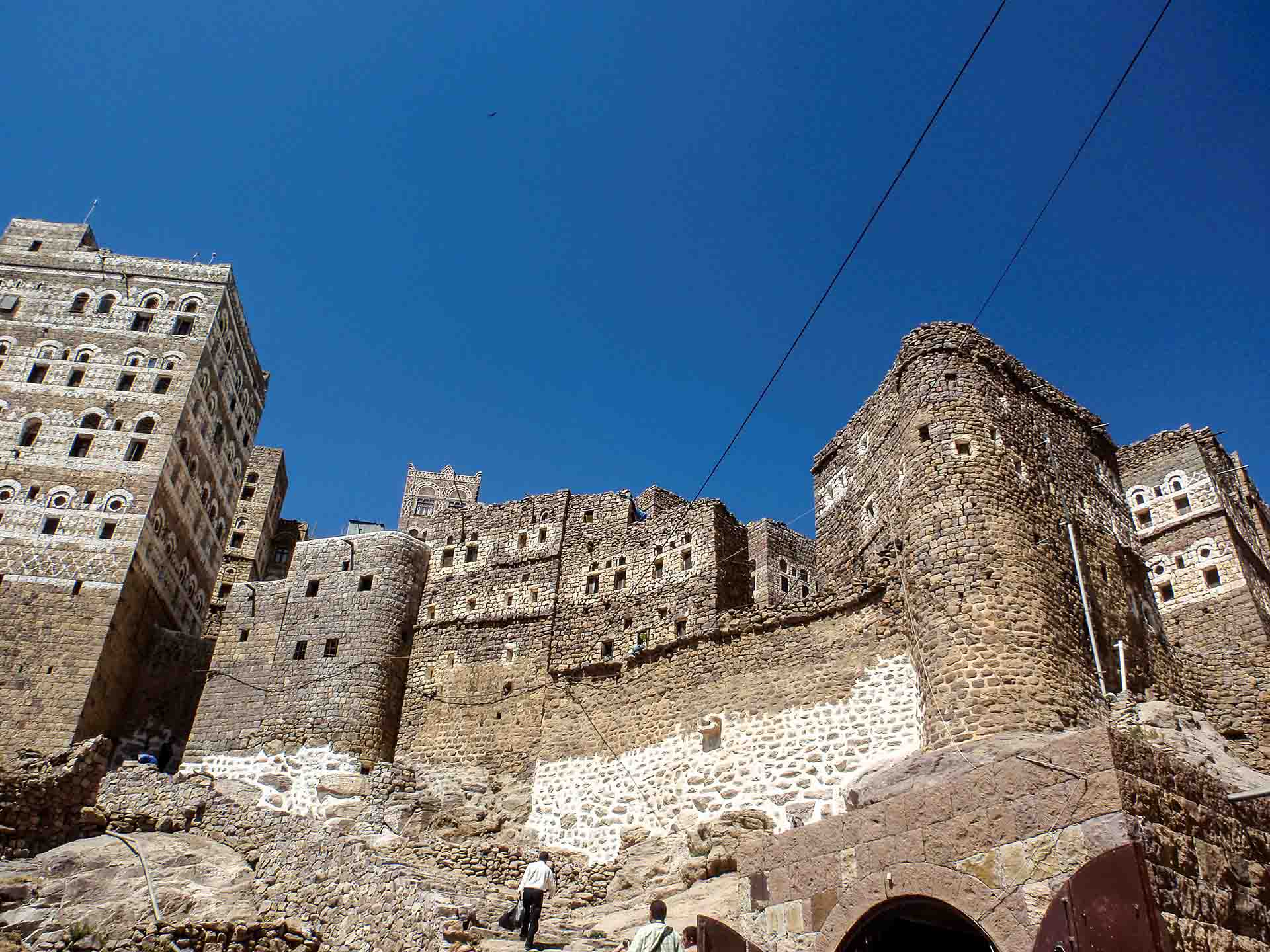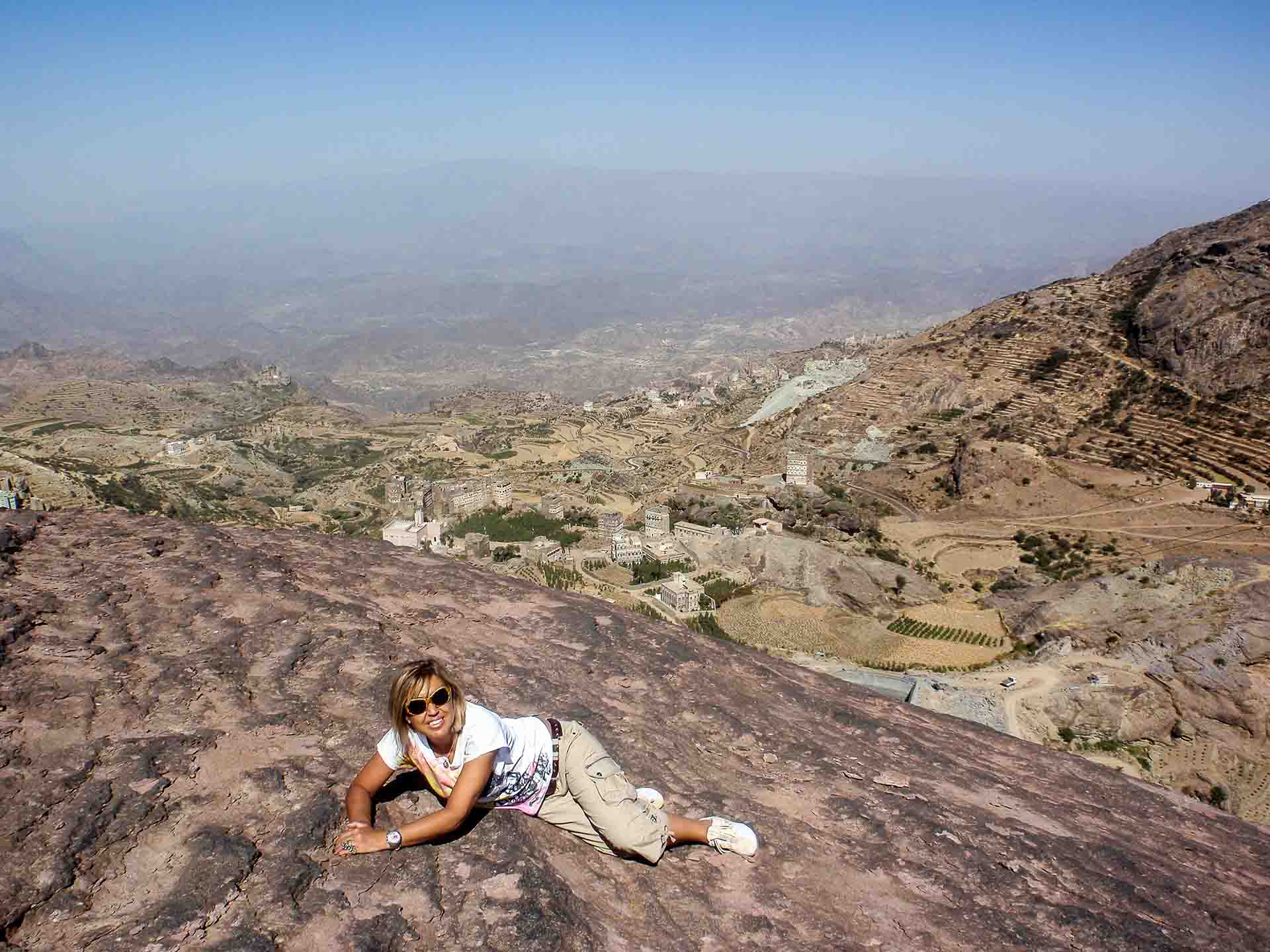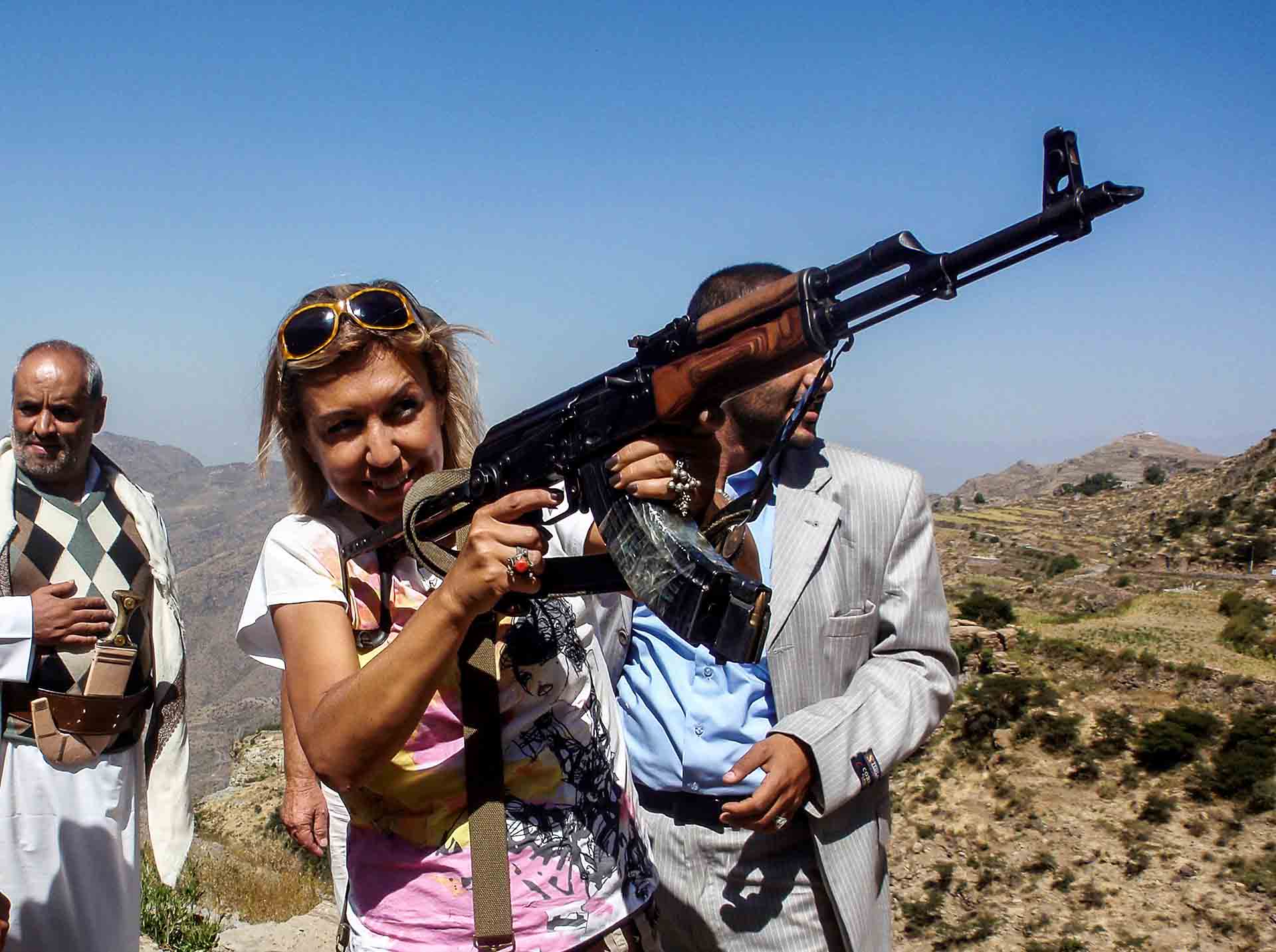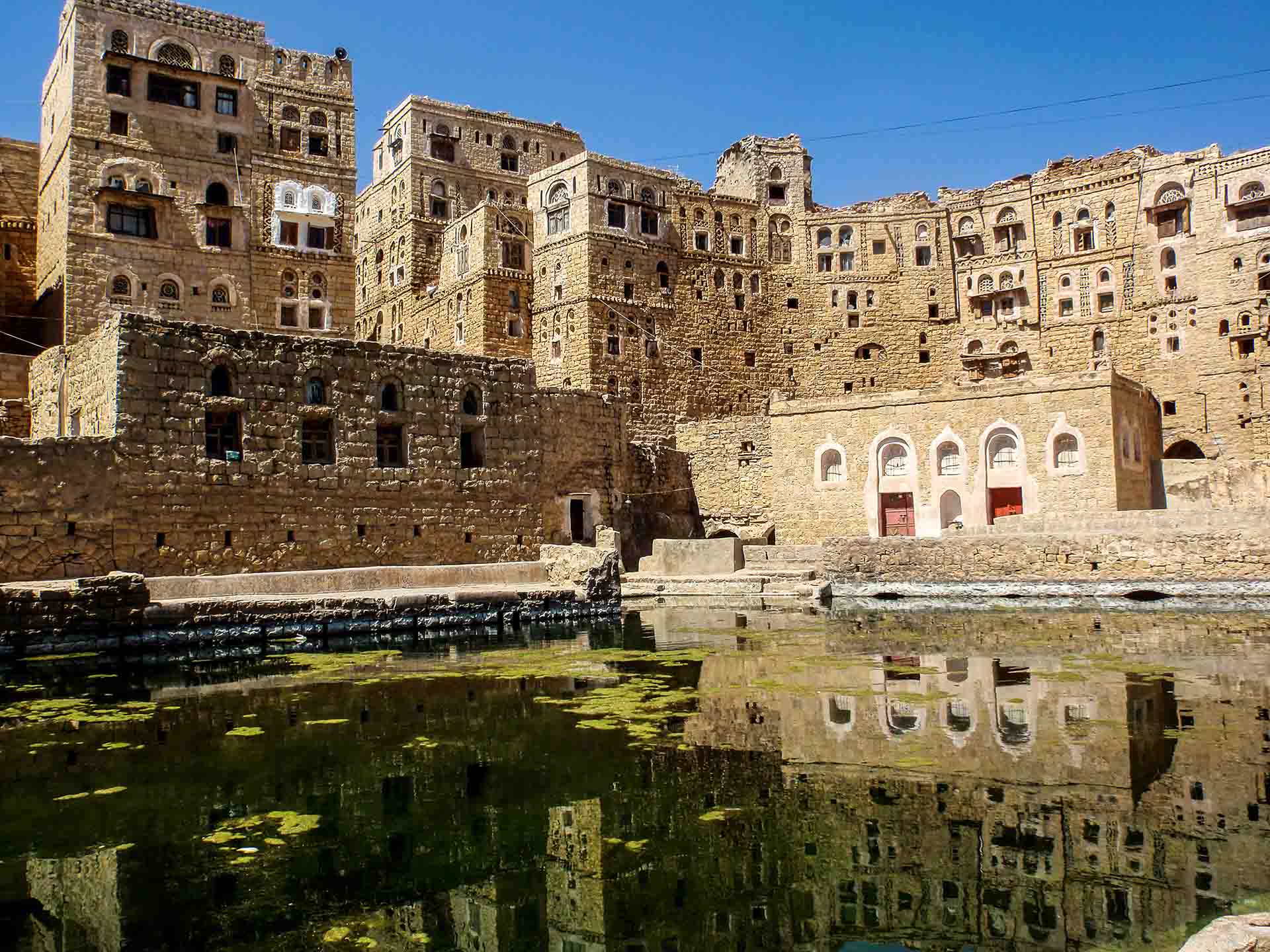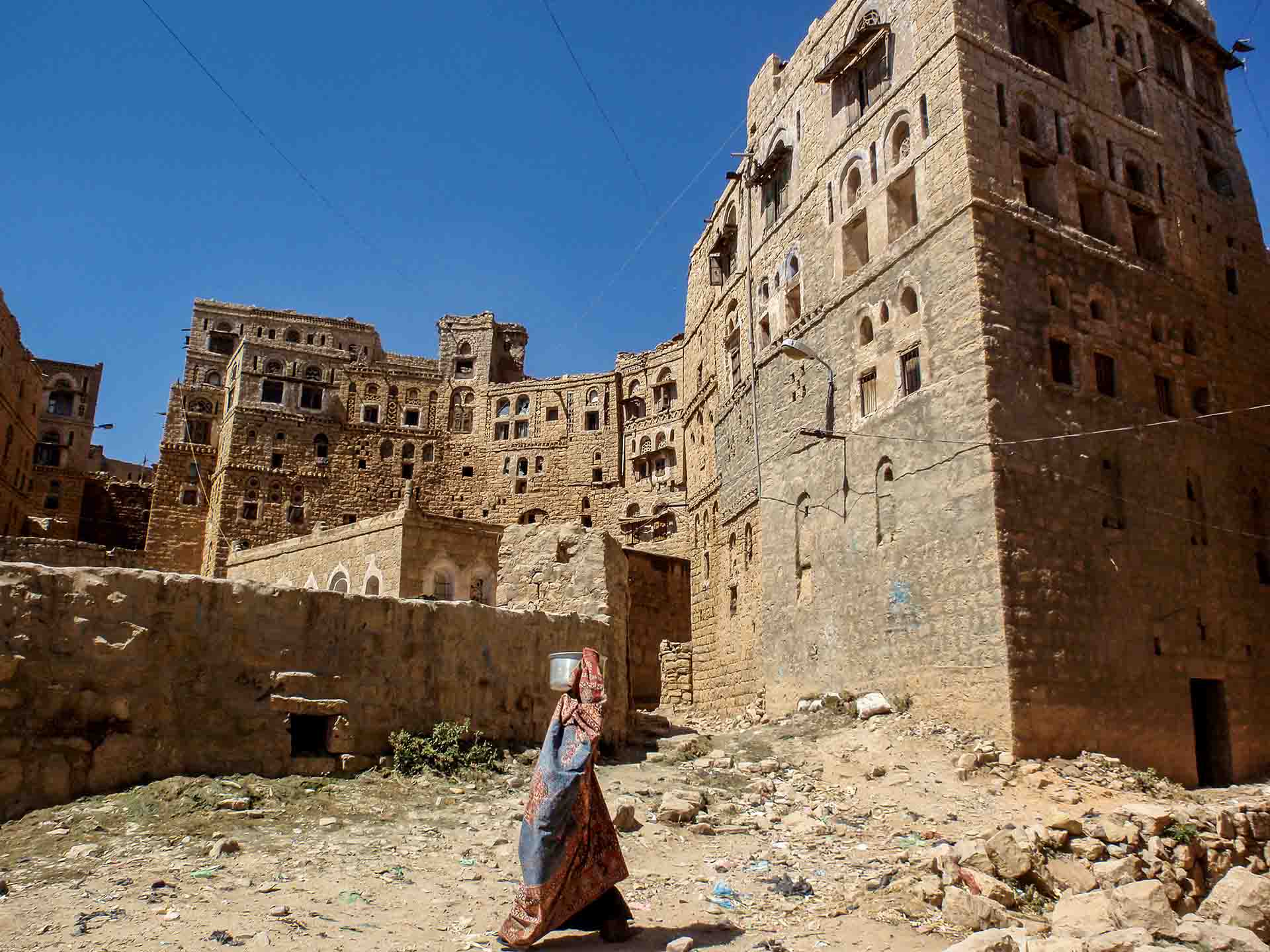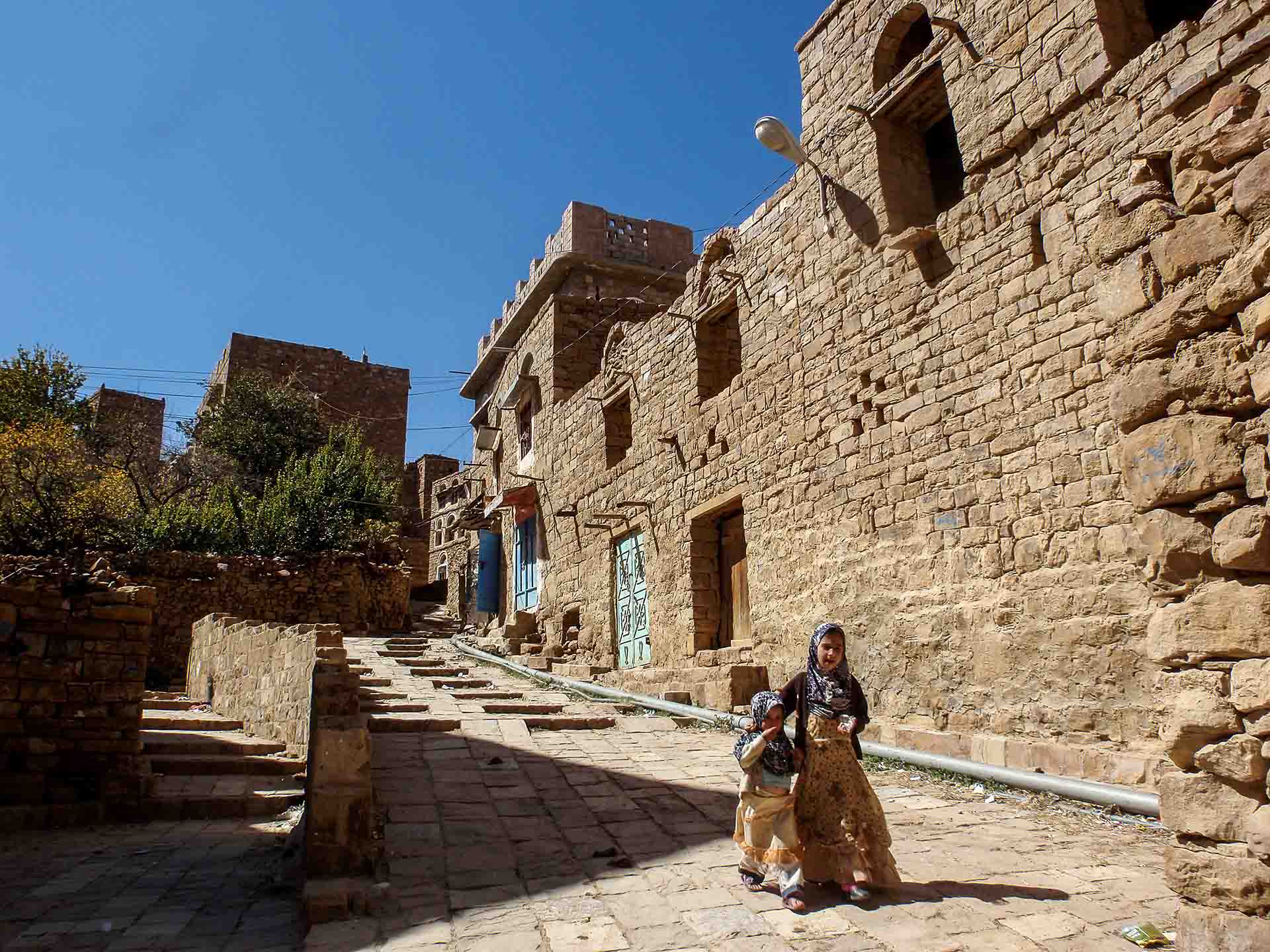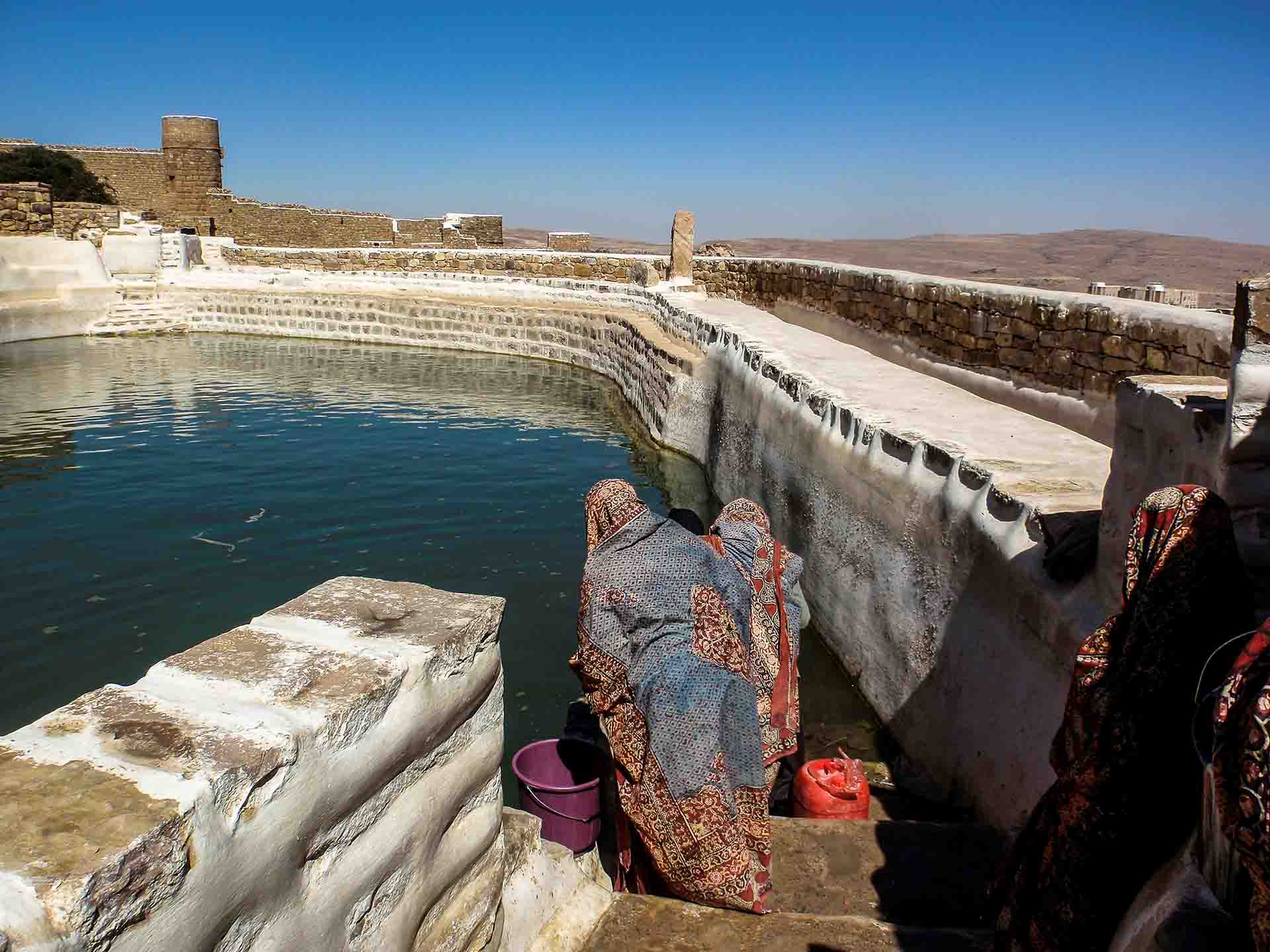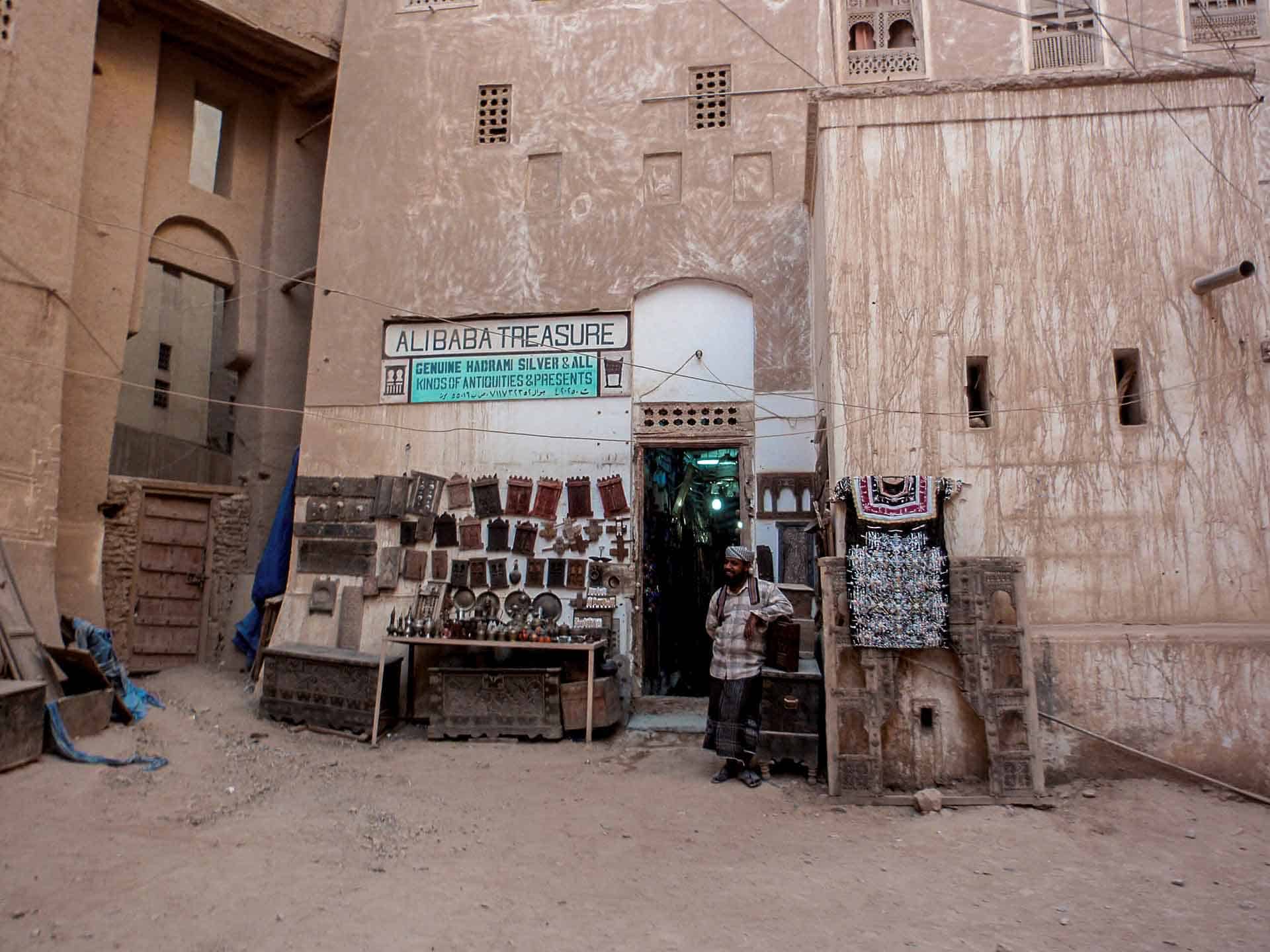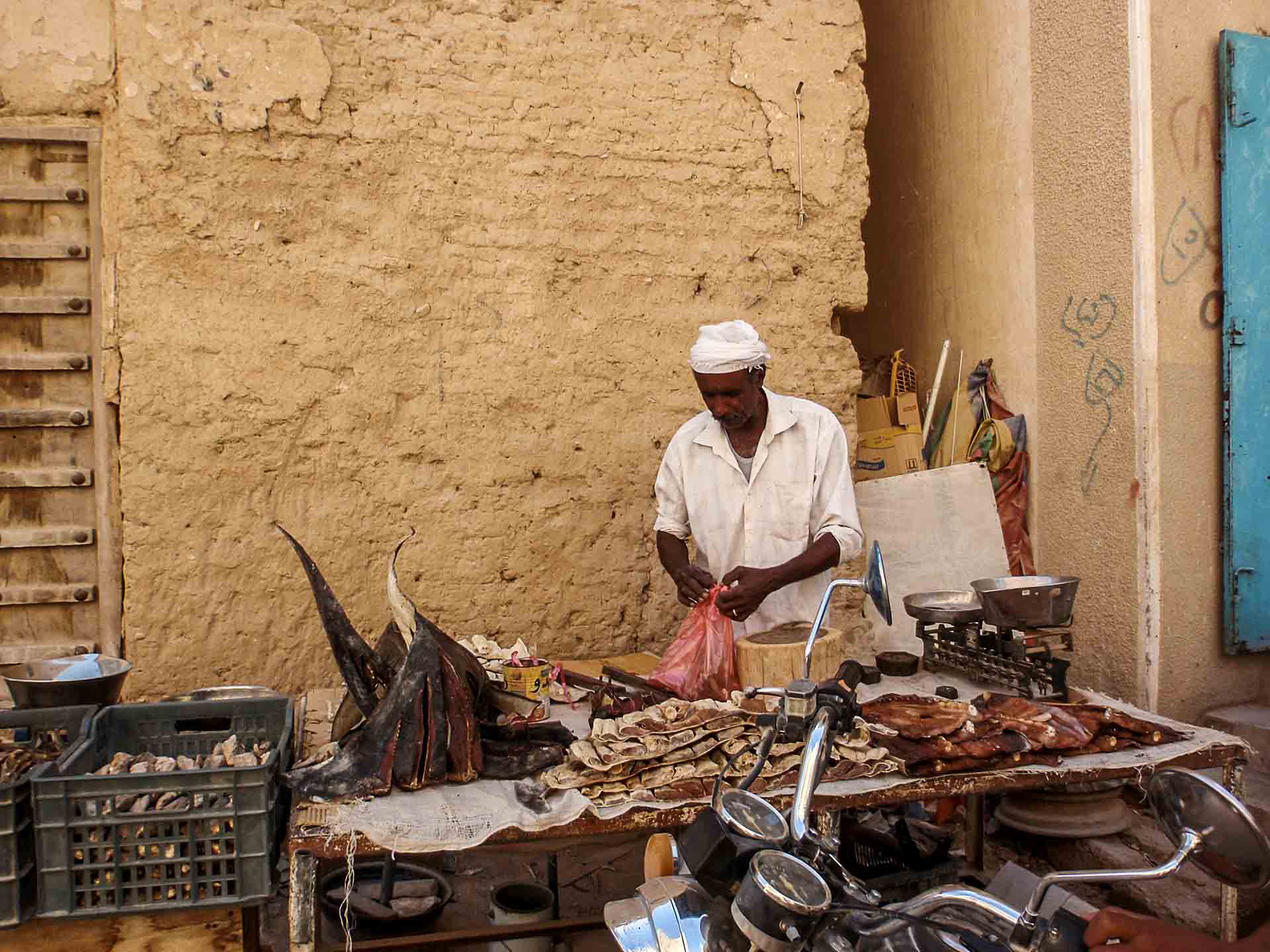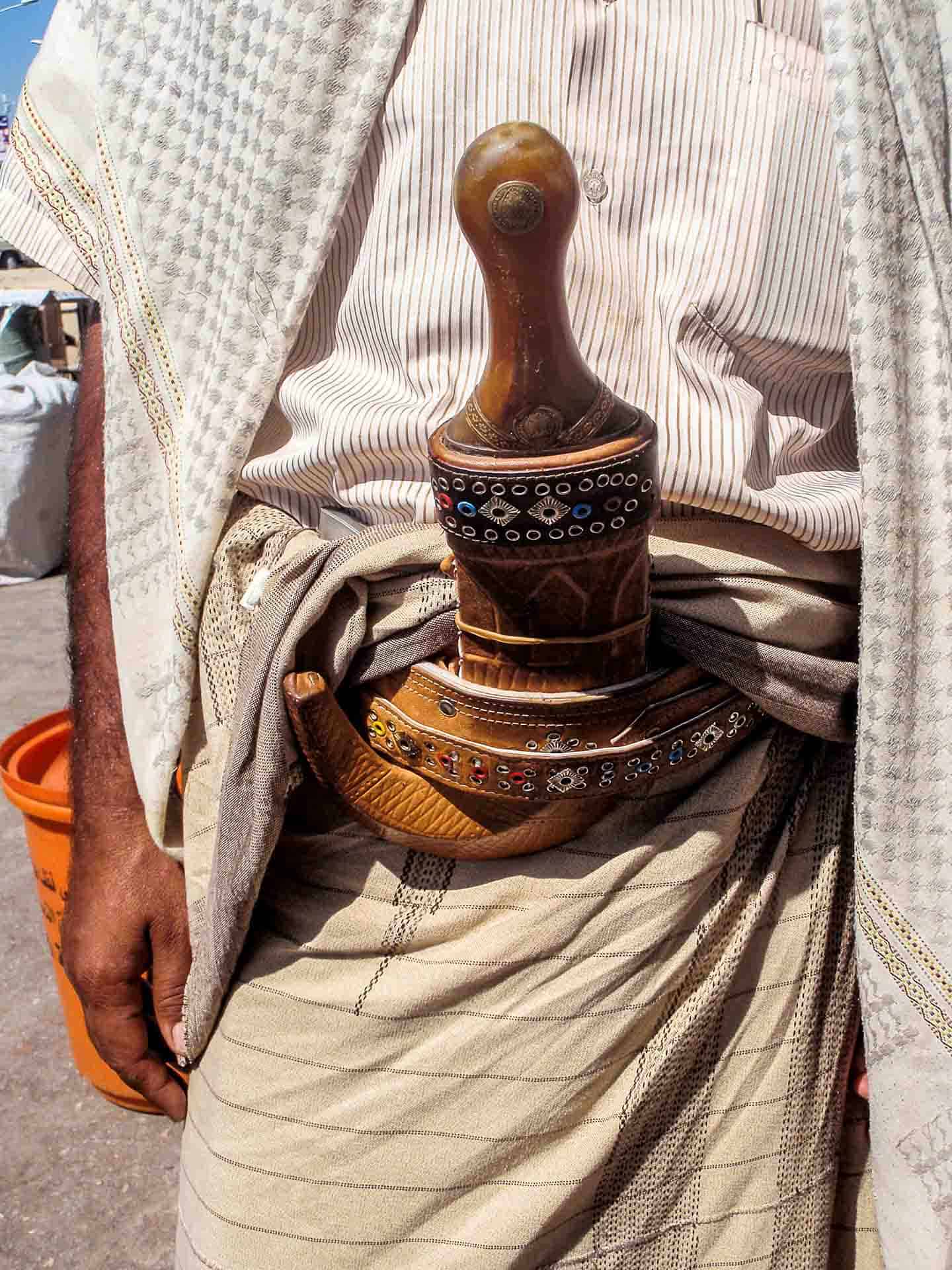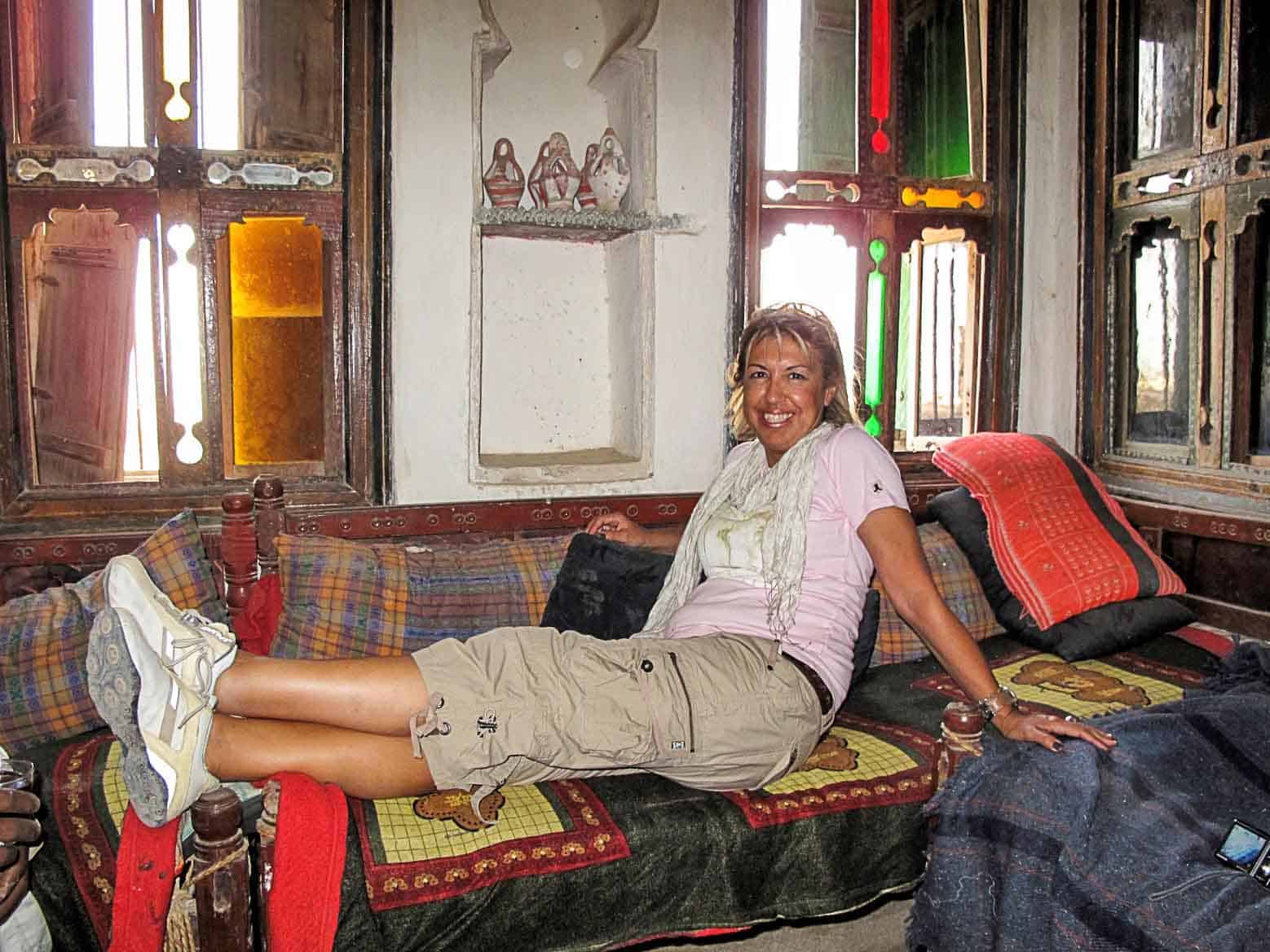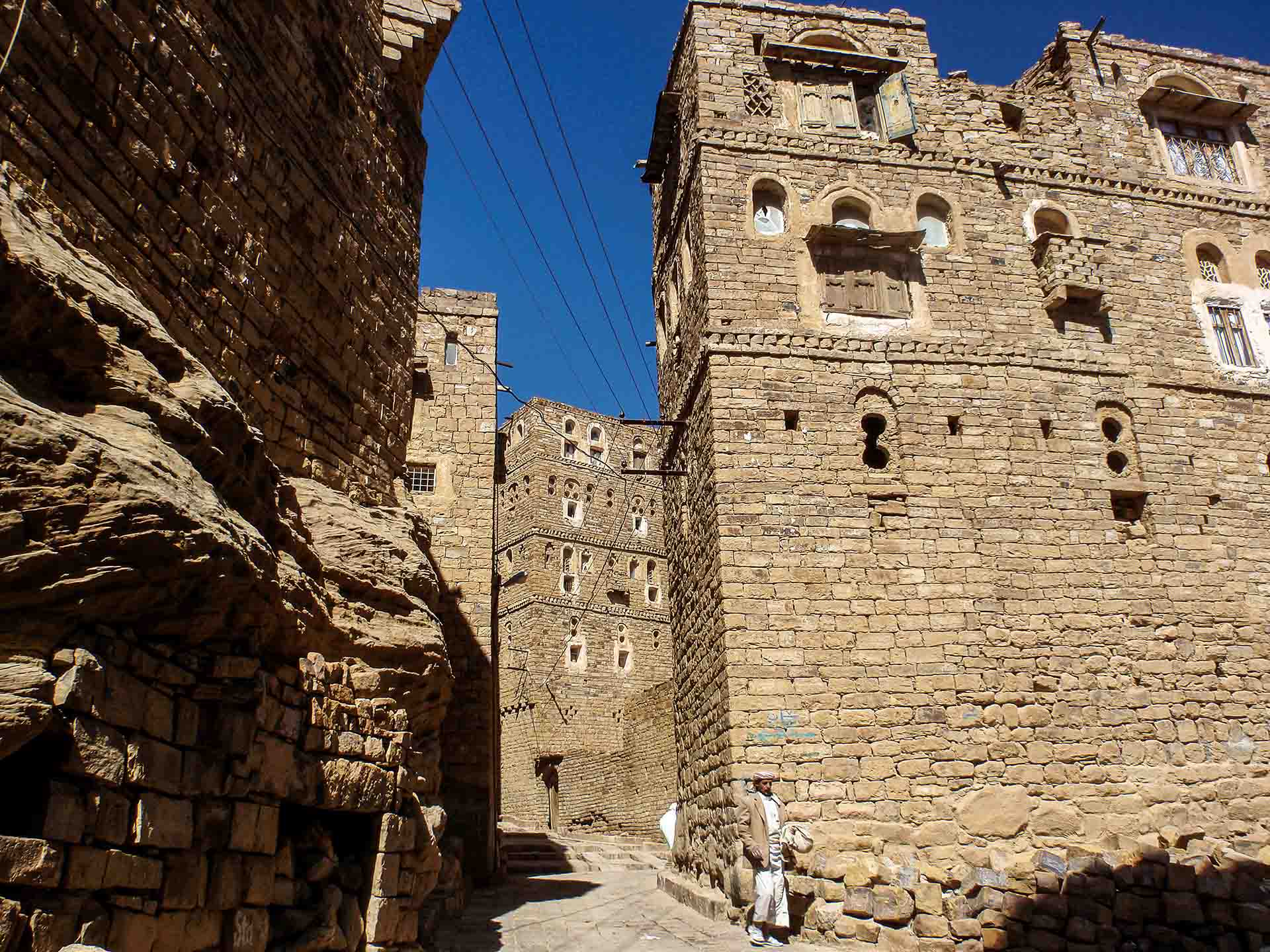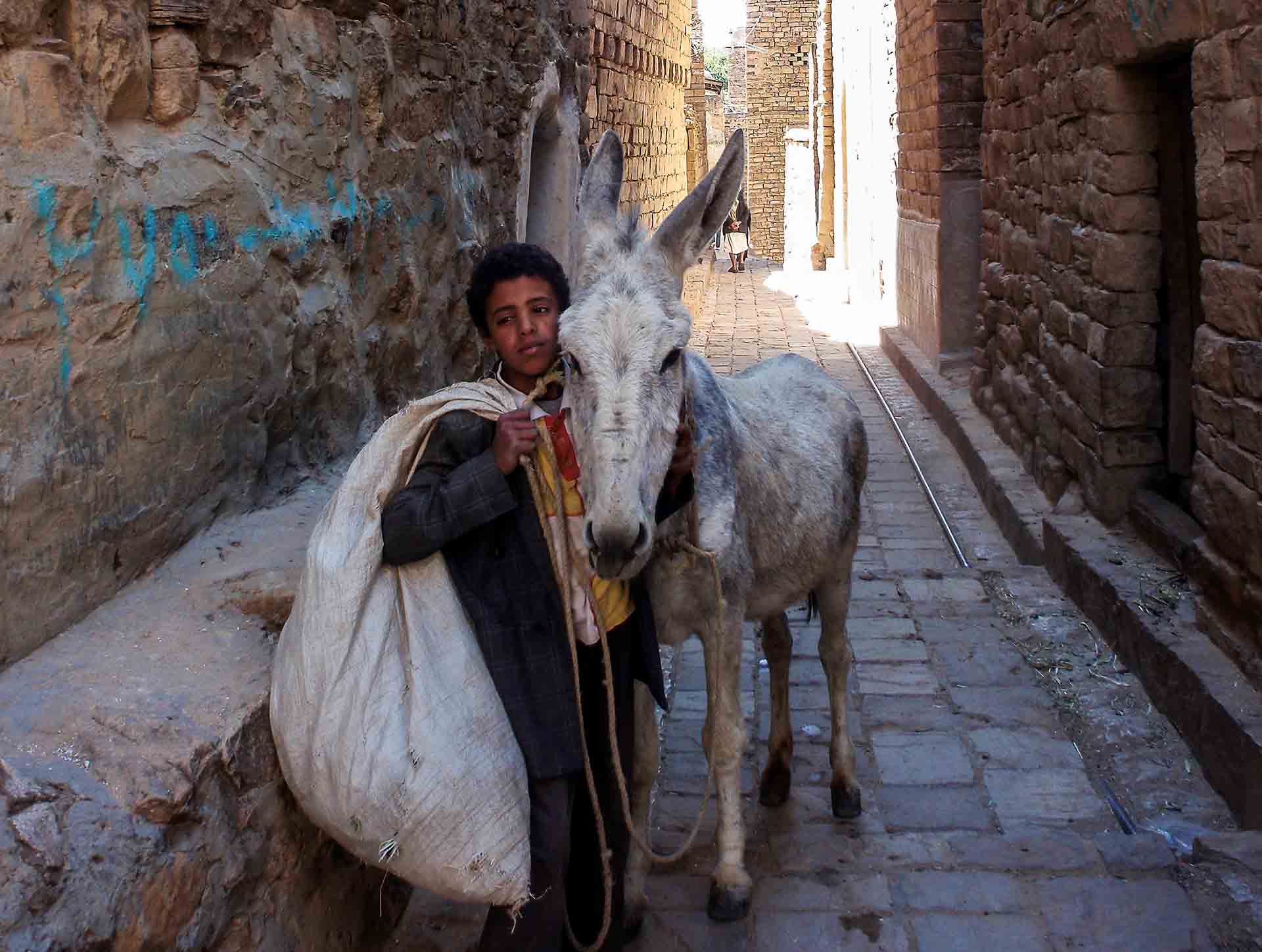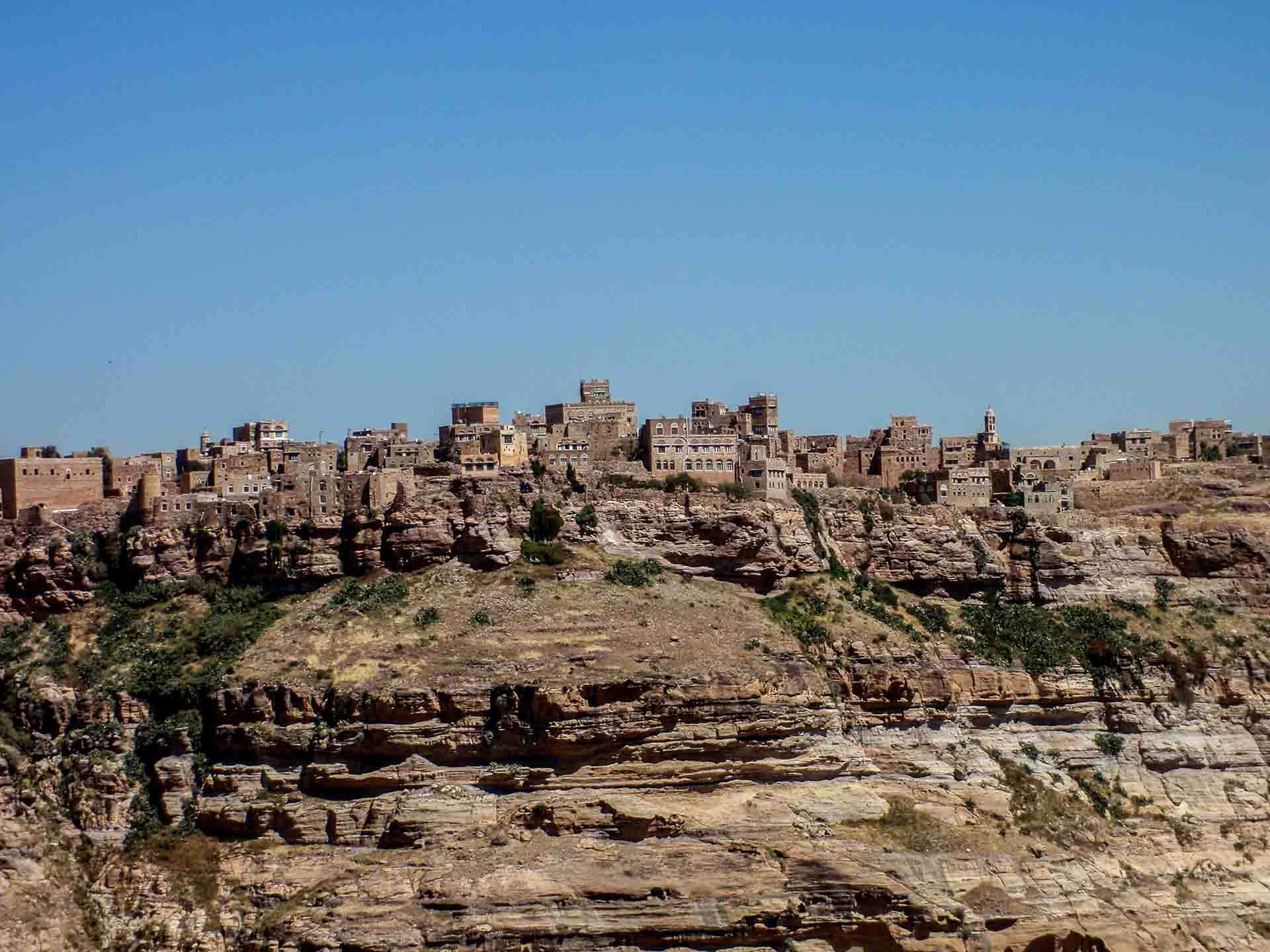Yemen's architecture is exquisite! Every town a different style, a different atmosphere, depending on the particular region. Multi-storey fortress-like buildings, where many families, usually relatives, live together. They practically constitute "castle towns" because of the continuous war status between tribes. The interior of these buildings is frugal but the facades usually intensely ornate, with typical eastern motifs, with round or arched windows, with carved "mashrabiya" safeguarding their privacy. Their doors, masterpieces from another age, totally carved, no two looking alike!
Soura Soura: The first words I heard from a shy clerk when I arrived at the museum of Sana'a, the first site I visited just a few hours after my arrival in Yemen. I was already informed; Yemenite men (only) love to be photographed. Women are terribly annoyed. Bedouin women, with beautiful high hats, will drive you away by hurdling rocks! After I photographed the clerk he took me alone to the top floor -I was foolish enough to go without my company that were all gone- He opened a window and urged me to step on a stool constantly repeating soura soura. My heart opened to host and fall in love with this magic land with what I saw through the window!
From that window at the top floor this morning of October I took my first glimpse of and marveled at Sana'a, the capital that Shem, Noah's son is said to have founded after the flood, at an altitude of 2.200m. For some people it is the "pearl" of Arabia, for UNESCO a monument of World Cultural Heritage.
A live museum where nothing has changed since the time of Old Testament. The tower-like multi-storey buildings of the old city, built with mud bricks during the 10th century A.D. with the typical gypsum and mud brick ornamentation forming elaborate geometrical patterns. The city has been repeatedly bombed over the last few years and the number of buildings destroyed is yet unknown.
A famous landmark of the region, also of all Yemen, near Sana'a, is Dar al Hajar, otherwise known as "The Palace of the Rock", a five-storey building that was built in 1930, on pre-historical ruins, on top of a rock and served as the summer residence of the Imam.
From Sana'a and with police escort started my "ring" of exploration, with police escort, in this gorgeous country, a country with impressive terrain morphology, deserts, oases, wildly beautiful tall mountains, beaches with fine sand, azure color sea water and towns with unique architecture that are kept intact for thousands of years. Very few places were exempted from this exploration, because of the war and the risks involved; such were the mythical Marib and Bir Ali-Aden track.
The first station of this ring-shaped exploration course was the Wadi Hadramawt valley with its eerie beauty and the old town of Shibam, the "Manhattan of the desert", with 500 tower-like traditional homes made of sand mud bricks and straw, rising up to 11 floors, out of a huge sand expanse. Monument of the UNESCO World Heritage too.
Wadi Hadramawt used to be part of the road of the caravans that transported perfumes and incense. Its history goes back to the early years of mankind and is considered to be the place that is referred to as Hazarmaveth in the Old Testament.
Somewhere near is Seiyun, the largest city of the valley, with the fabulous palace of the Sultan and the picturesque souqs. And then there is Tarim the 3rd most important city and the cultural center of the valley, with colonial style buildings, combined with Indonesian and Yemenite architectural elements.
Satellite river to Wadi Hadramawt is Wadi Dawan, with magnificent decorative elements; the impressive village Al Hajarayn made of mud, nested at the edge of a cliff, one of the oldest villages of the region and the impressive multi-colored palace in the village Khaila, now the Buqshan Hotel.
But the diamond of Wadi Dawan is Haid Al-Jazil, a village perched, in total, on a boulder. Yemenites have a passion for building on massive rock lumps.
From Mukalla, the picturesque port with the beaches and the forlorn resorts, escorted by the army besides the police we drove to Bir Ali. We climbed on the volcano crater, flooded by seawater, whose natural beauty is equally impressive with the remains of the historical town of Quana, the old port of incense, covered by sand both of desert and sea and part of it being underwater. Huge black volcanic rocks, white dunes reaching the seafront and the blue Indian Ocean at the background. The sea like a dream, the sand, ivory white, consisting of shell and coral powder. We did not resist the temptation and took a swim!
And then, we flew to Aden -war was in progress just "around the corner"- the old, glorious port of Arthur Rimbaud- and then to Al Kaedah, Bin Laden's birth place, then Ibb and the magnificent Jibla with its three-storey tower-like buildings with the white stone facades, UNESCO's World Cultural Heritage too. This is where Paolo Pasolini made several scenes of the film "One Thousand and One Nights".
Next was Taiz, the most westernized town of the country, with the Arabic elements dispersed. On the way we had the chance to admire the historic town Zabid, the third UNESCO-protected place in Yemen, old capital of the country and seat of one of the oldest and most renowned universities of the Islamic world.
Then we arrived in Hodeidah, the large port with the unique fish market.
From Hodeidah we made our way eastwards, towards Sana'a. This area has strong African elements and many African immigrants. The complexion of the people darkens, women's niqab is replaced by multicolored clothes, their head always covered.
We climbed the fantastic Haraz mountains, a mountainous landscape of exceptional beauty, magic castle towns with exquisite architecture, nested at 2.500m altitude. There is Manakha and the jewel of Yemen, the unique Al Hajjarah.
The journey to Sana'a continued through oneiric landscapes and unique experiences; we even tried shooting with kalashnikovs!
North of Sana'a and the mountainous body Haraz, lie the magnificent castle towns Hababa with the huge water reserve and Kawakaban, hanging at 3.000m, causing vertigo at its sight!
The beautiful Thula is another UNESCO World Heritage Monument.
While returning to Sana'a I felt as if I had passed into another dimension, in the Bible era, as a humble onlooker of another, eerie world!
The once "Blissful Arabia" with the rich heritage, that blends with myth and magic afforded me incredible experiences, images of landscape and city architecture. Besides, I had the chance to know the everyday life of adorable people, that seemed as though coming from another planet; Images that grew roots as obsessions in my memory and heart.
I wonder when Yemen will get out of the havoc! Will it still be "my Yemen", the Yemen I experienced? I doubt it….
